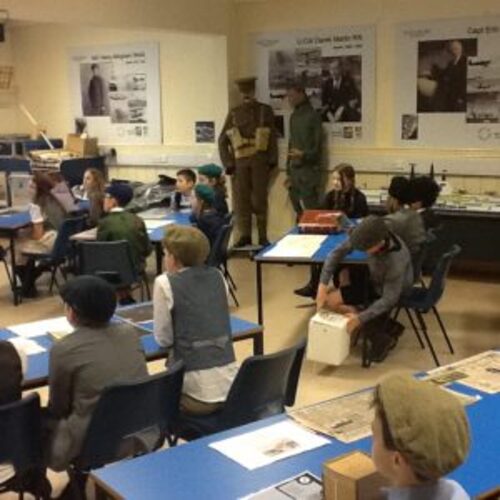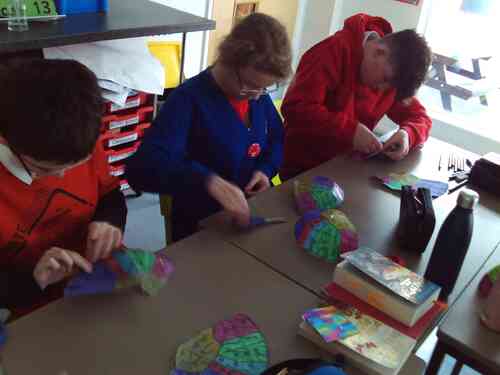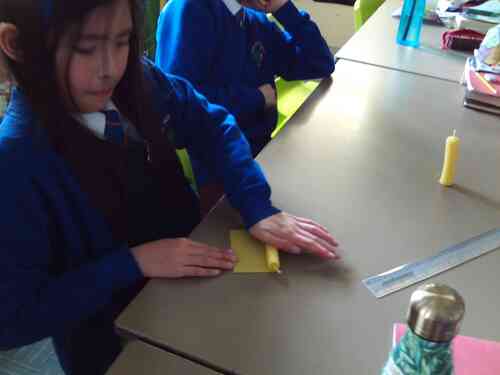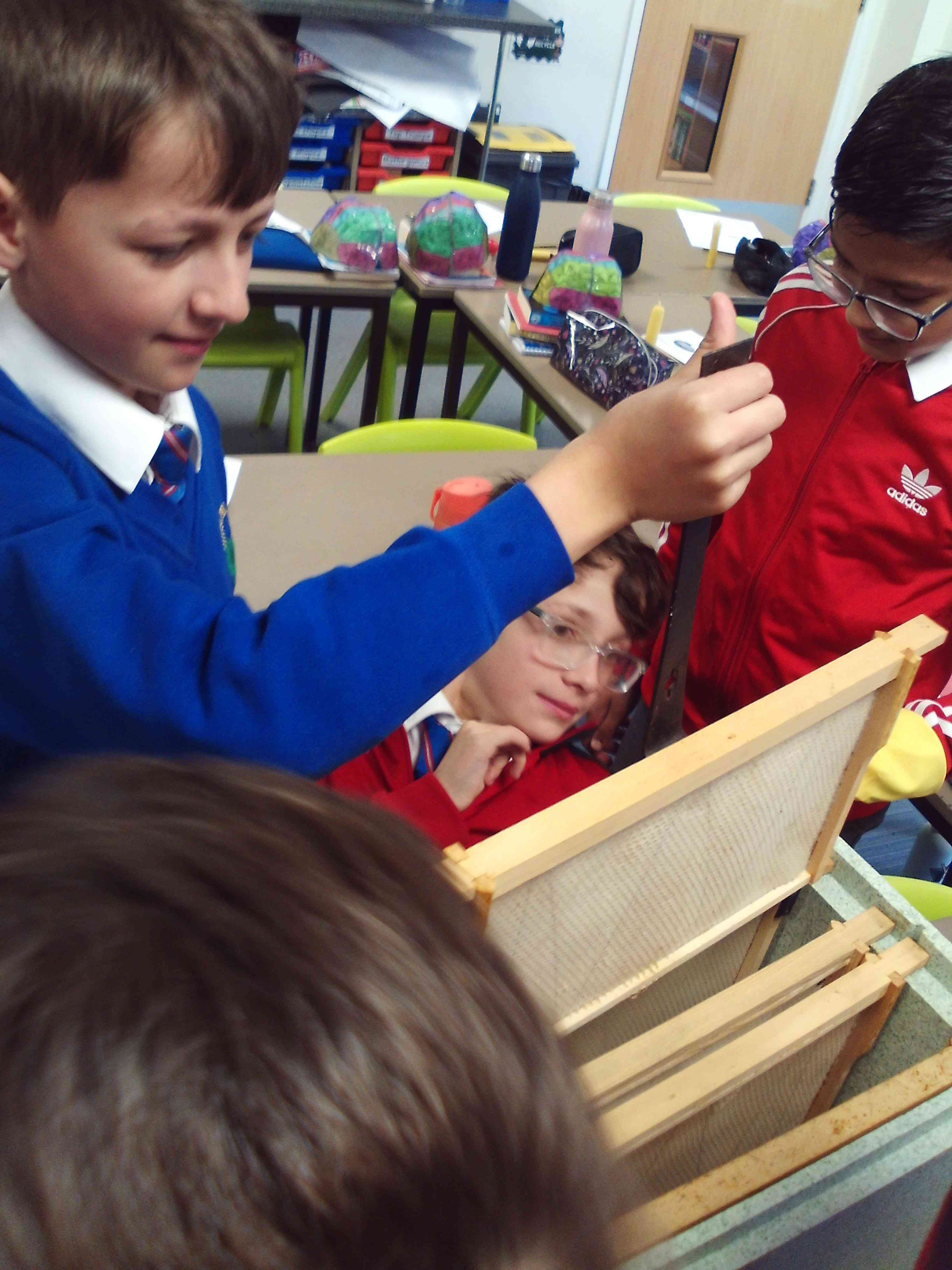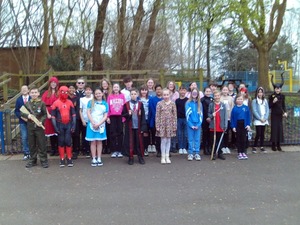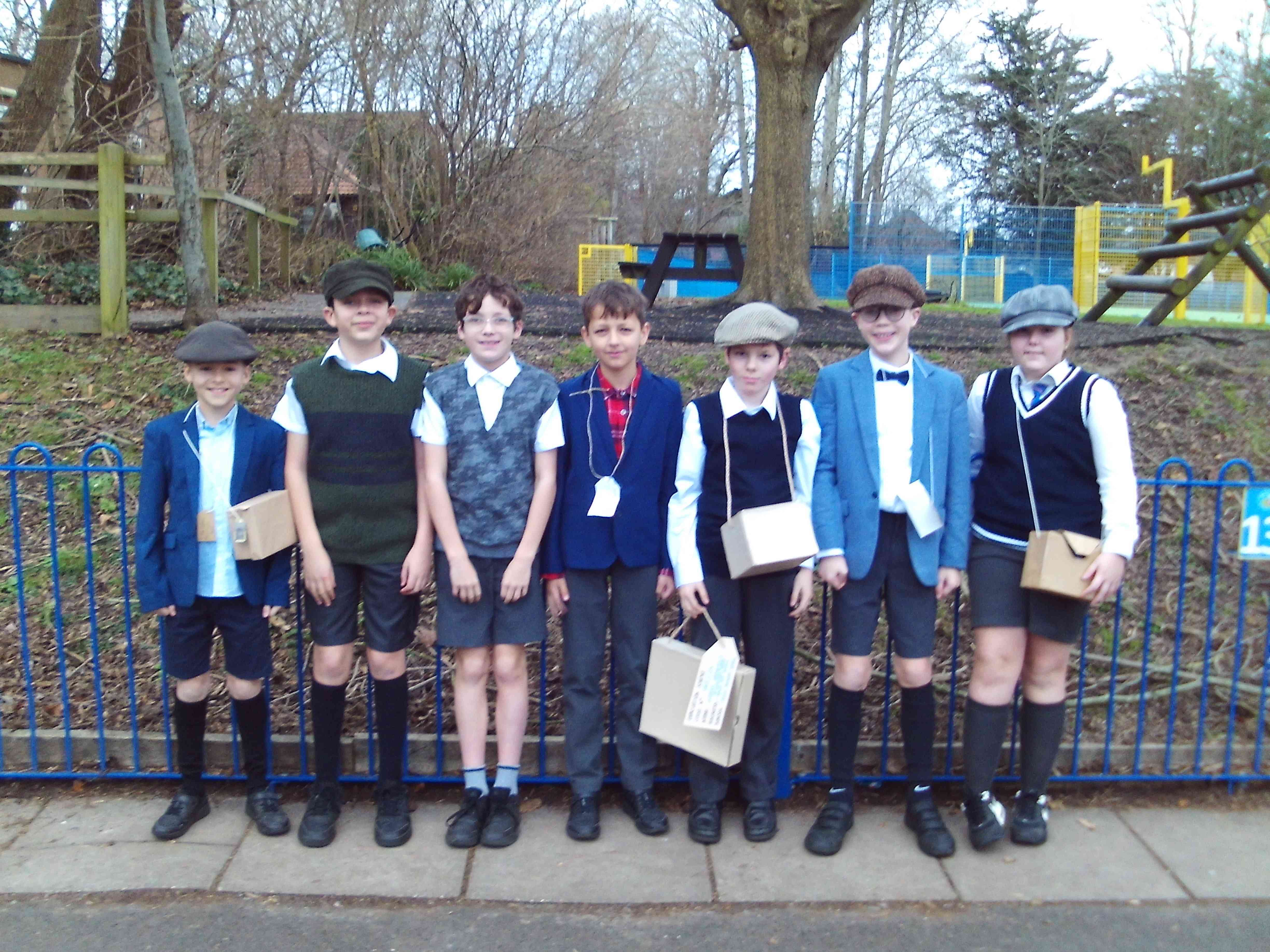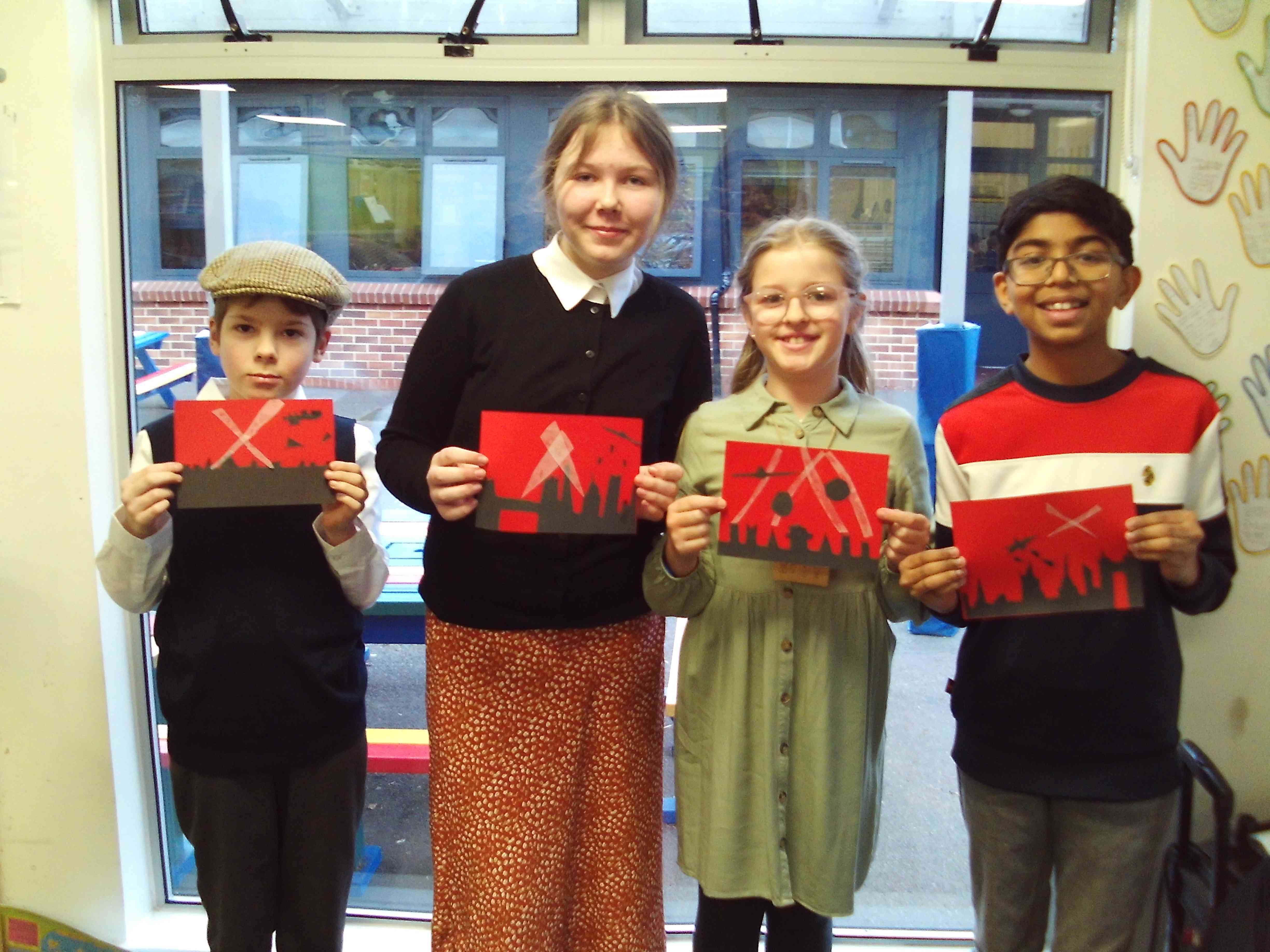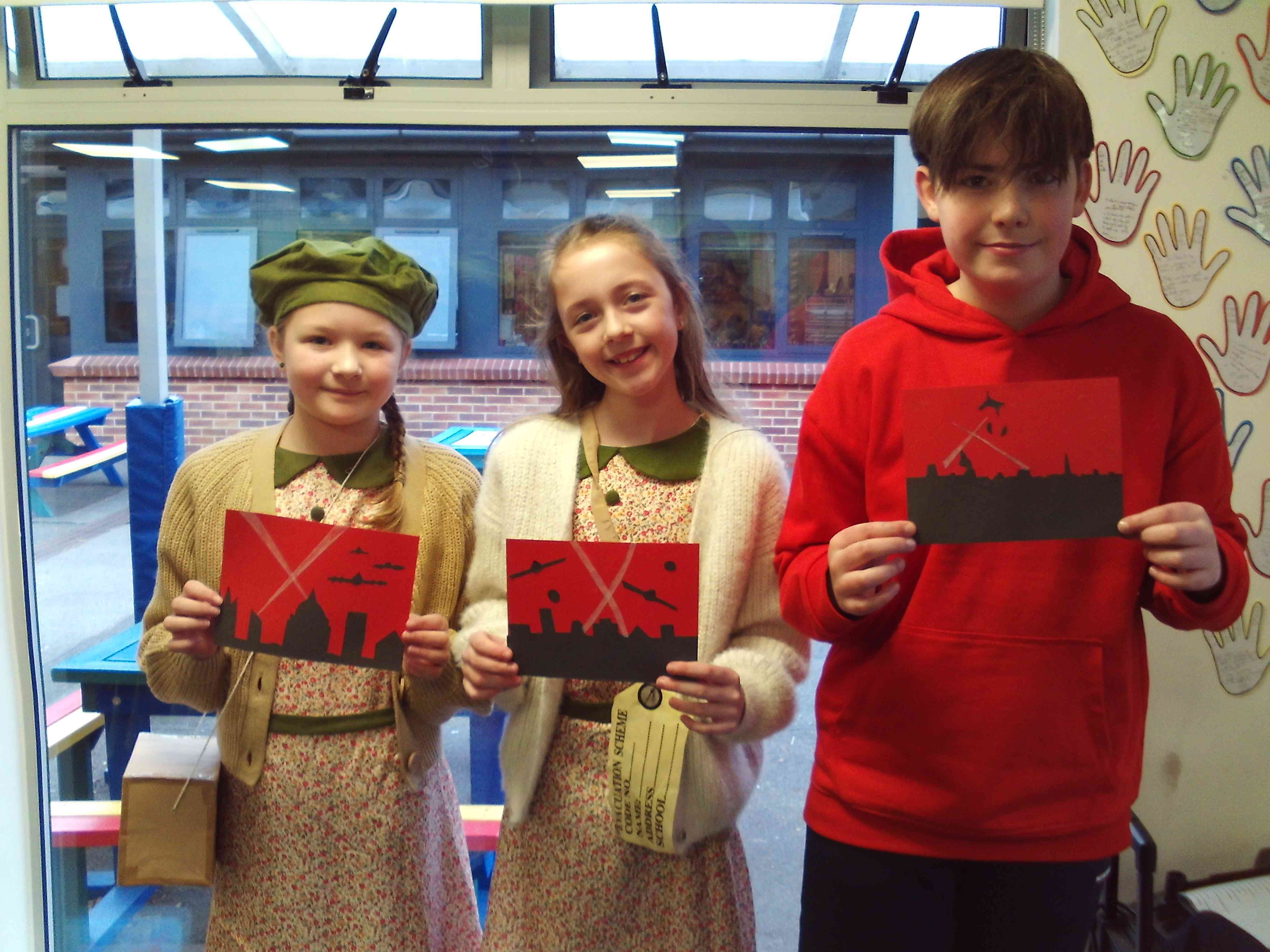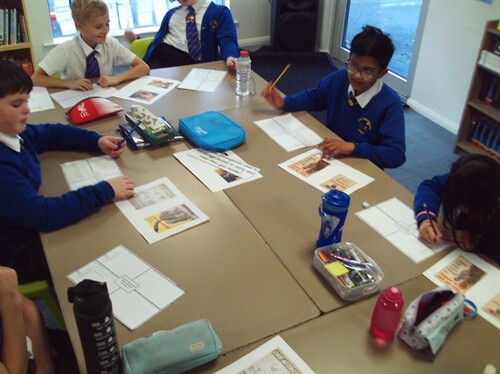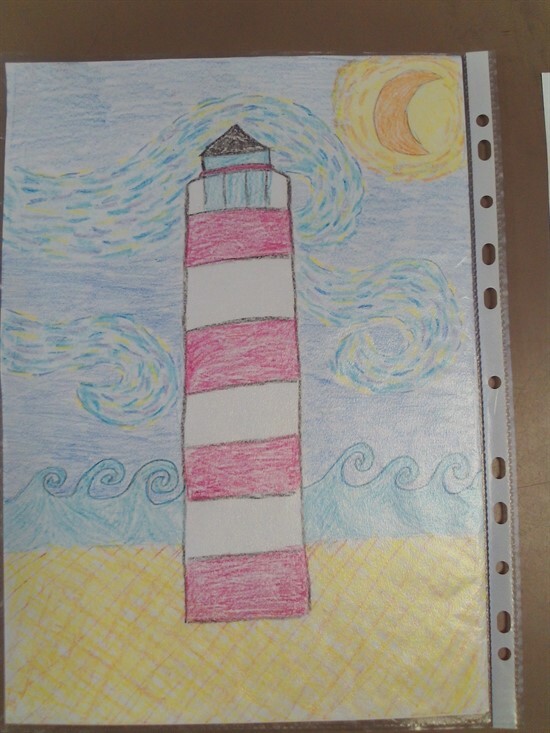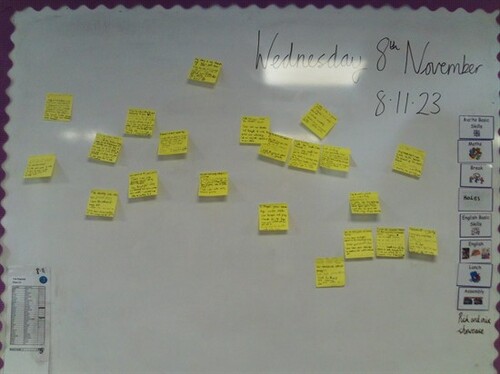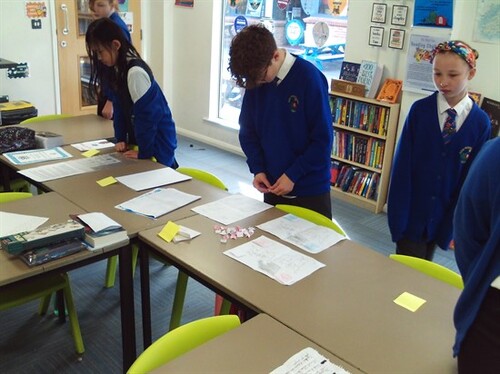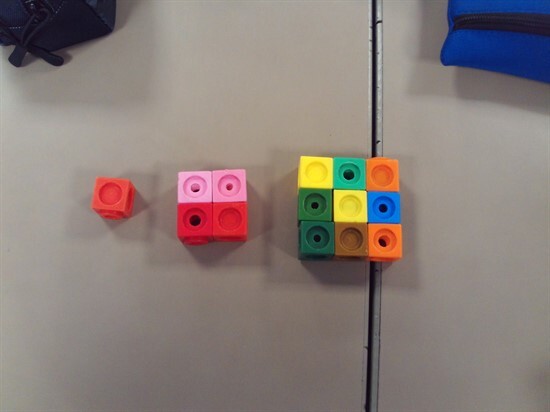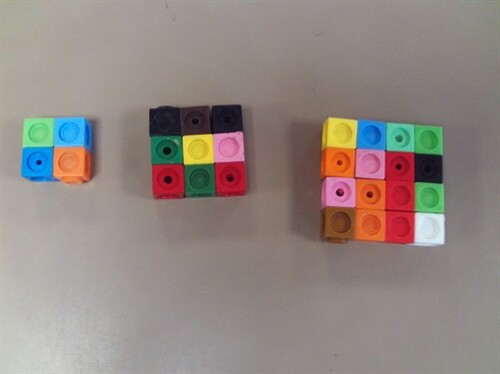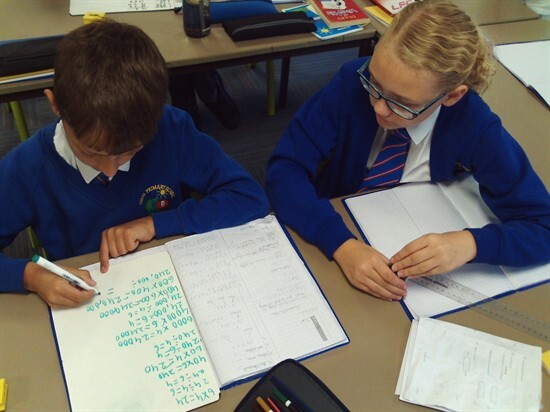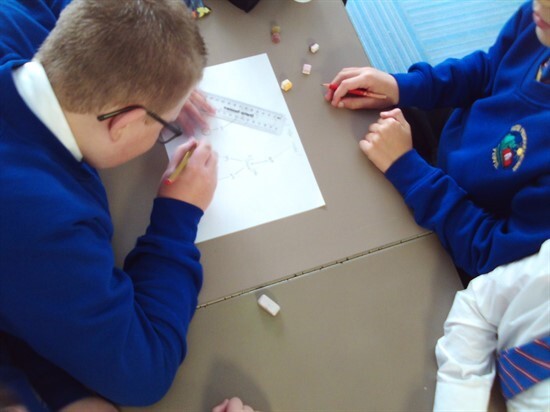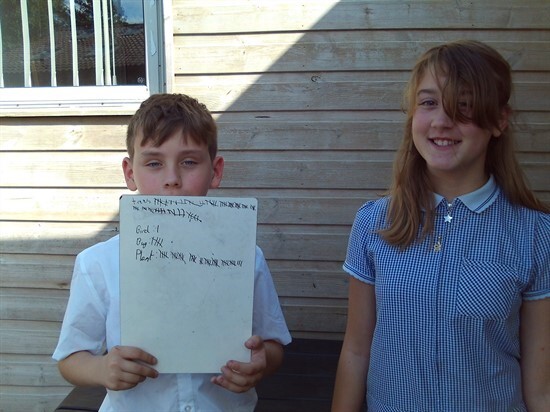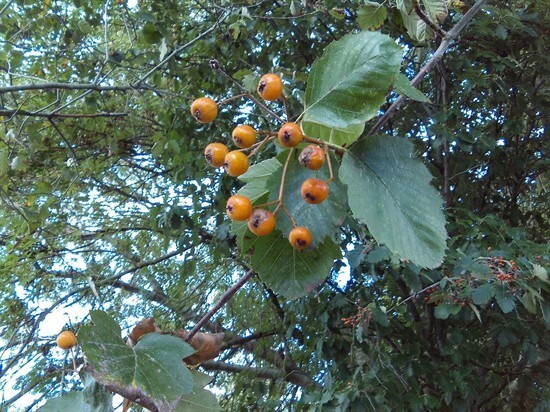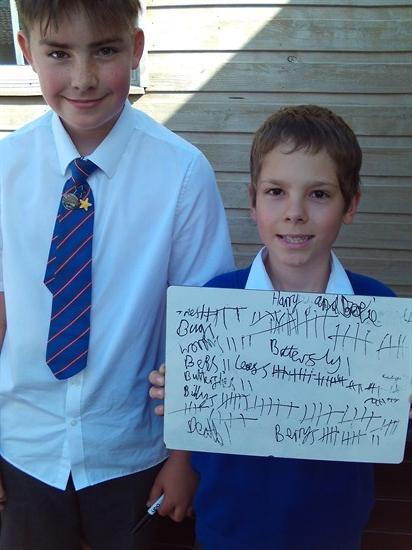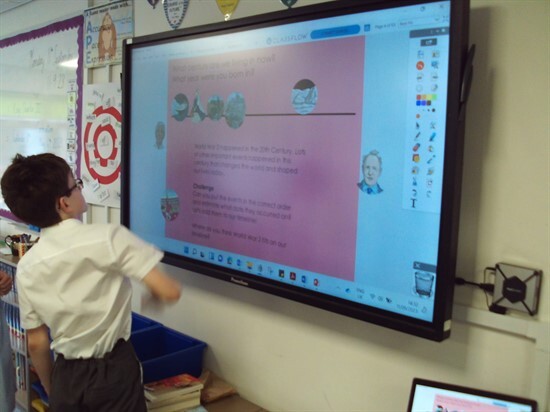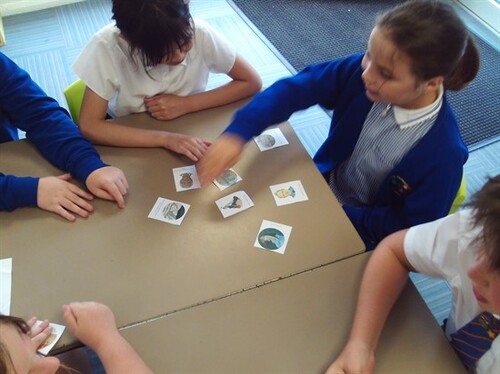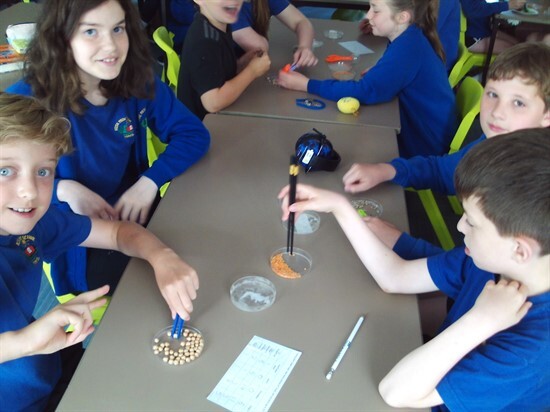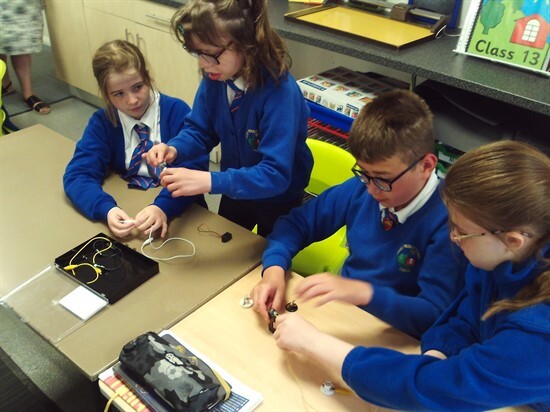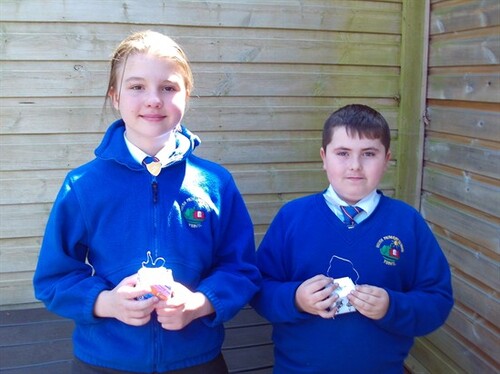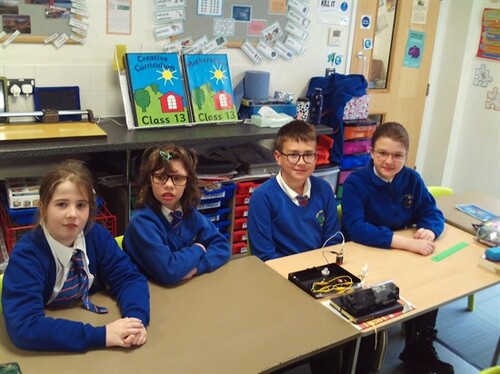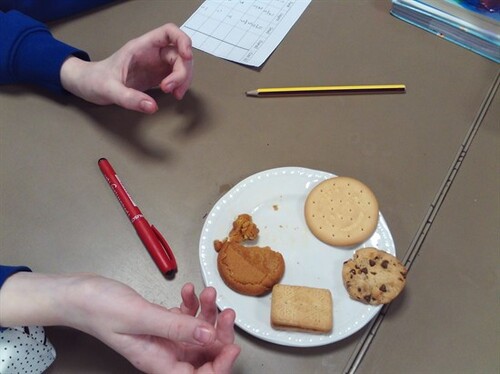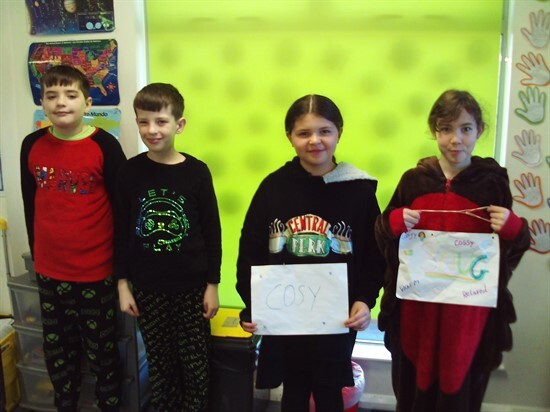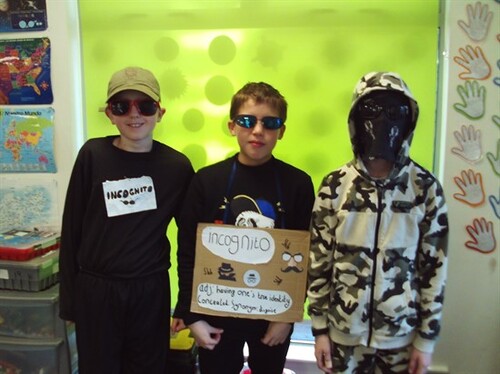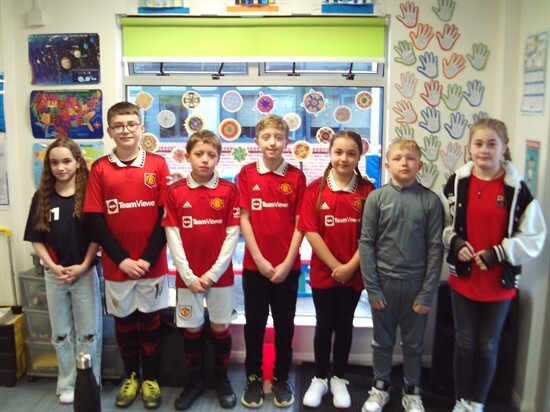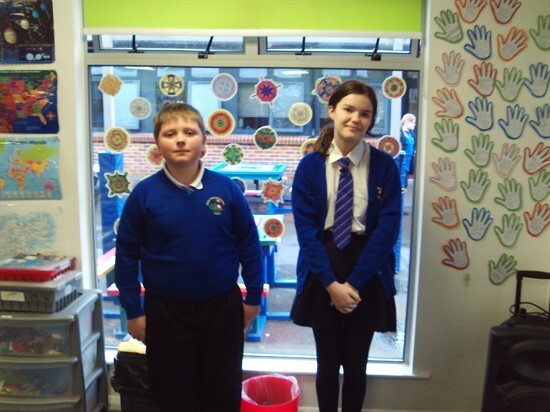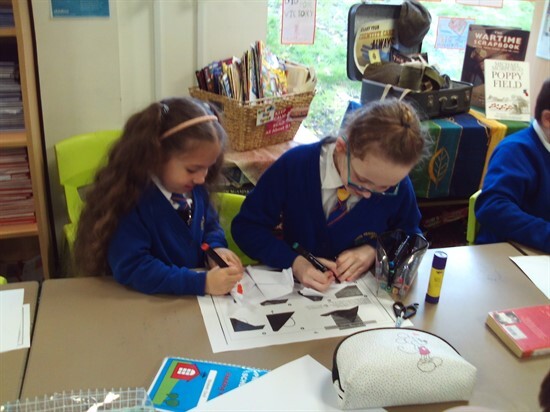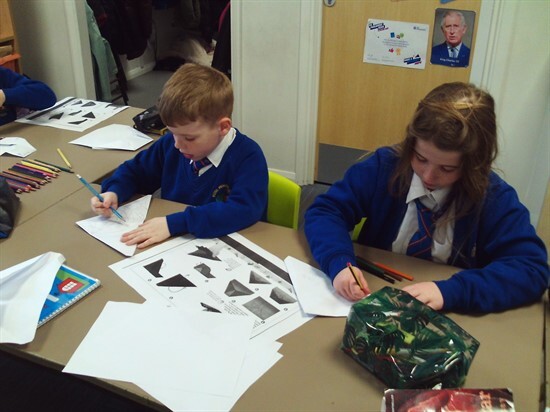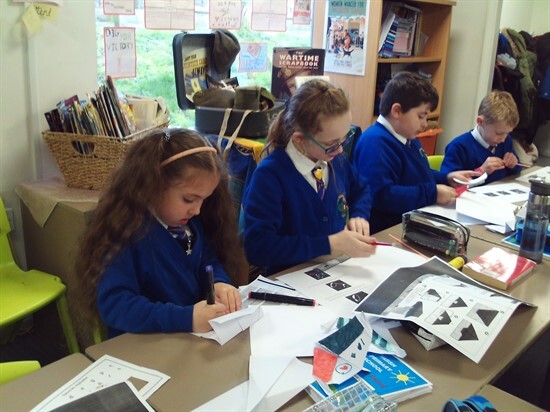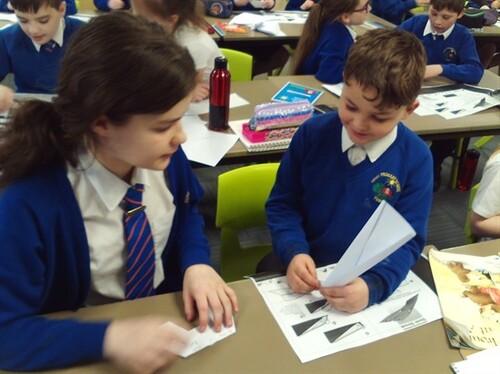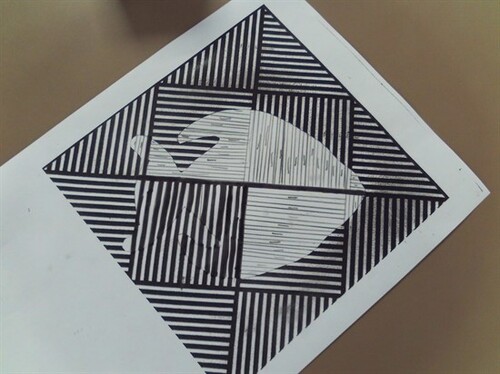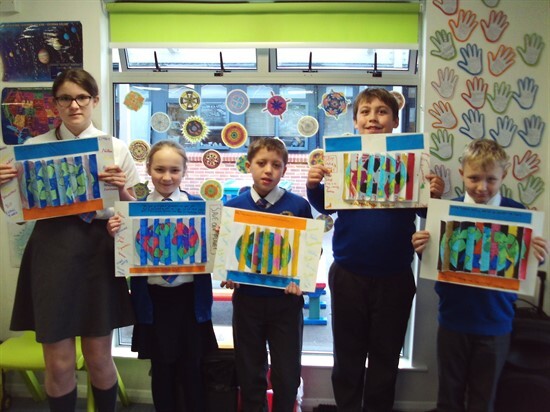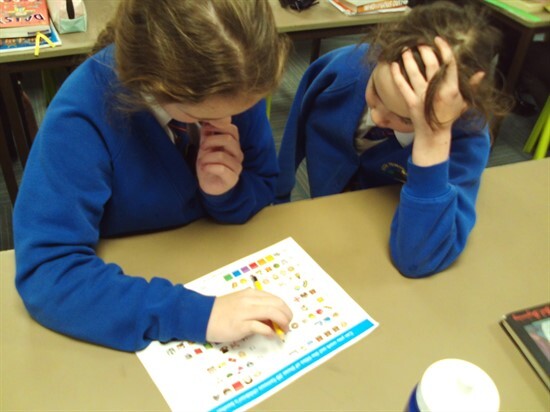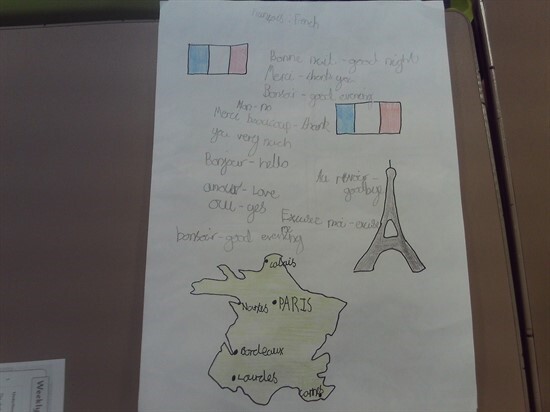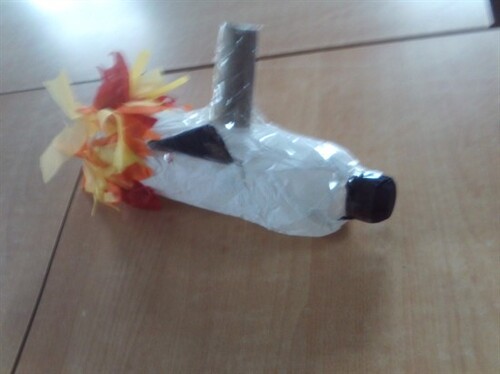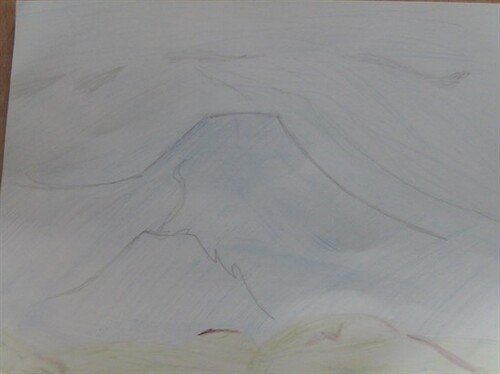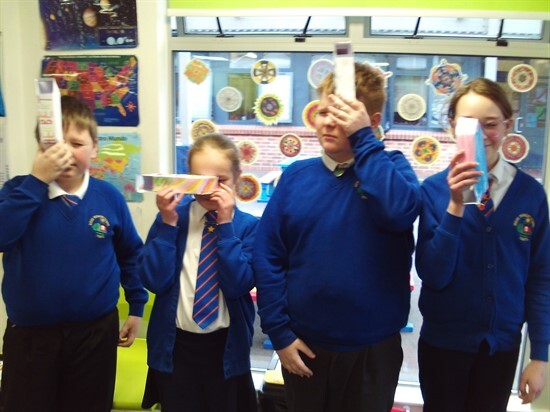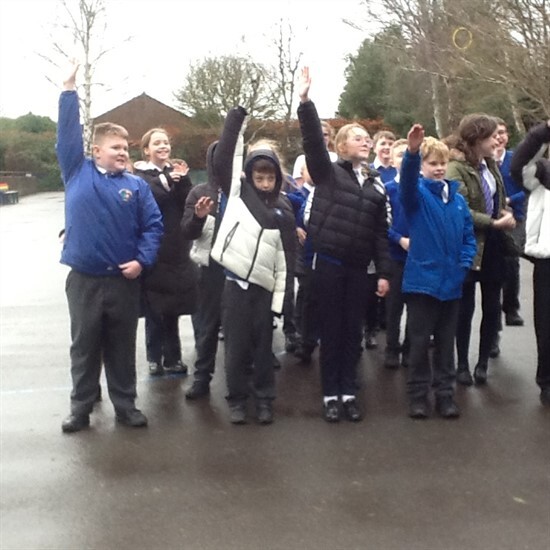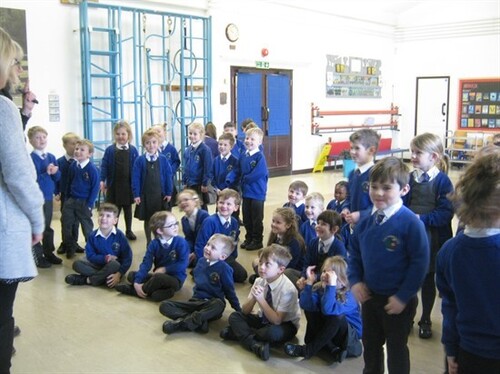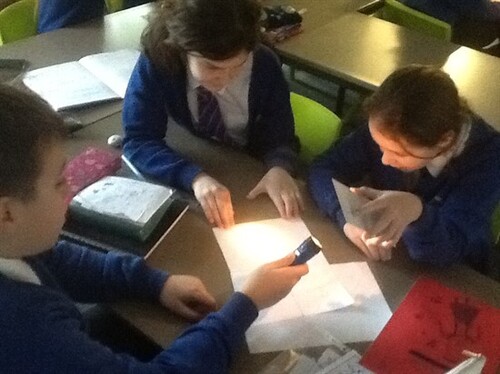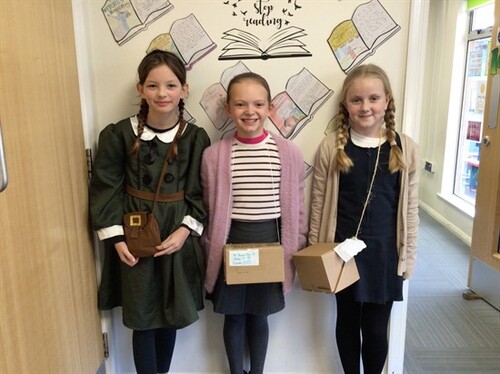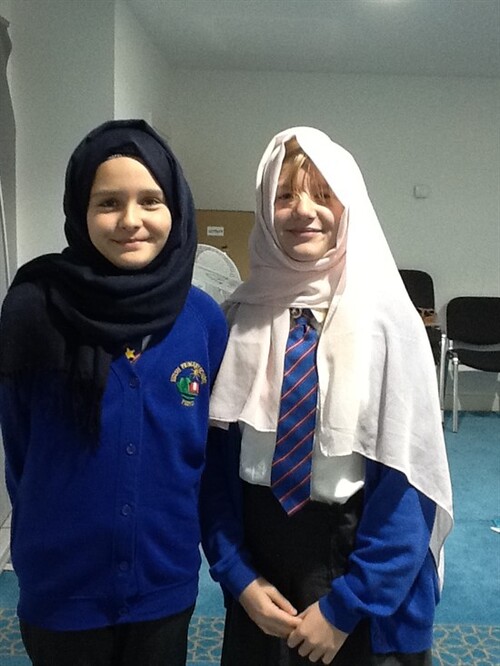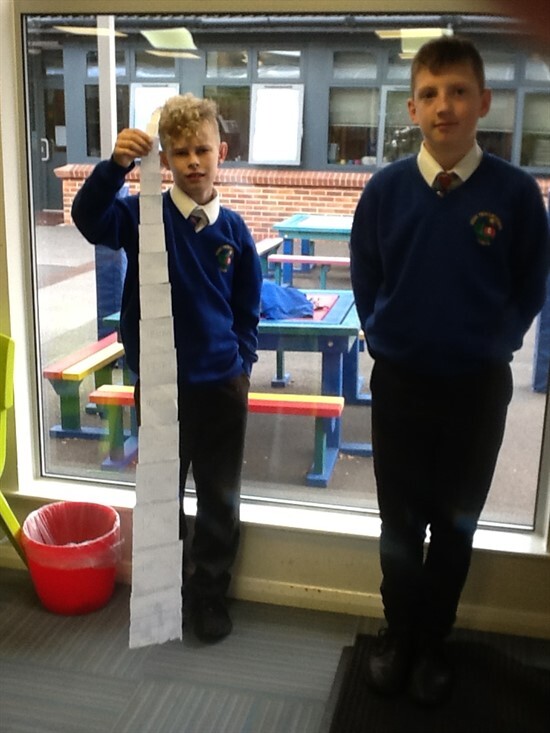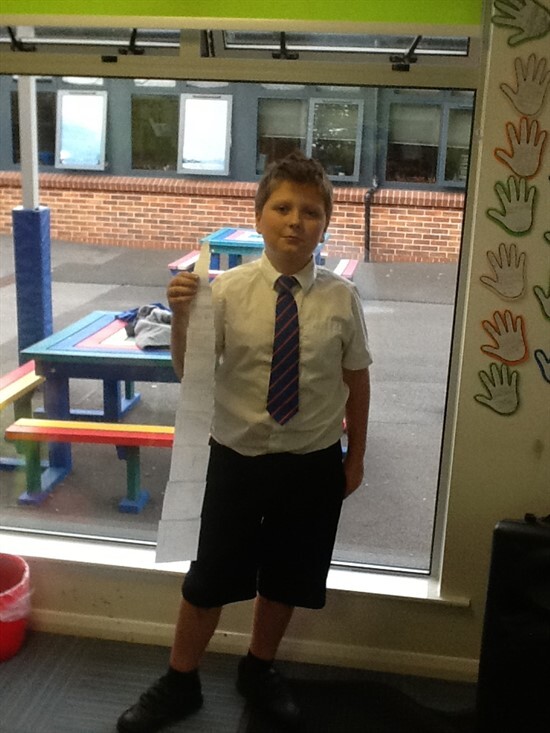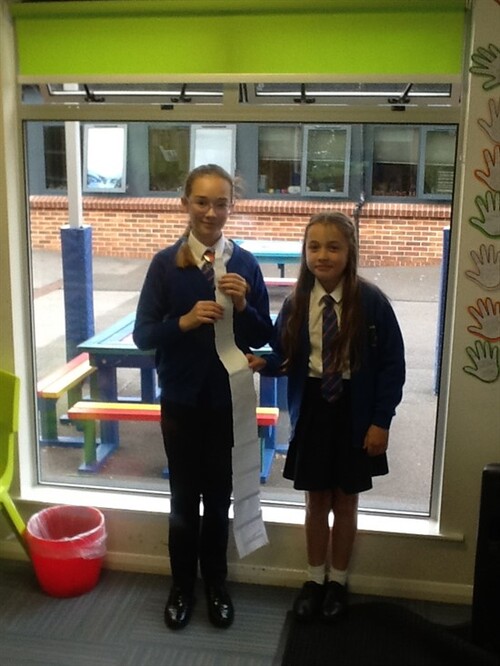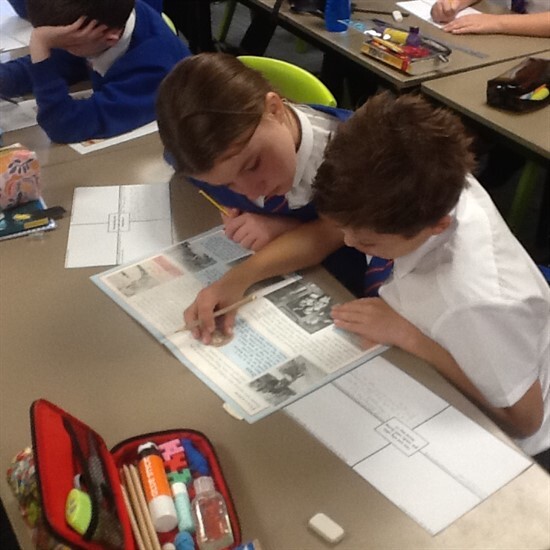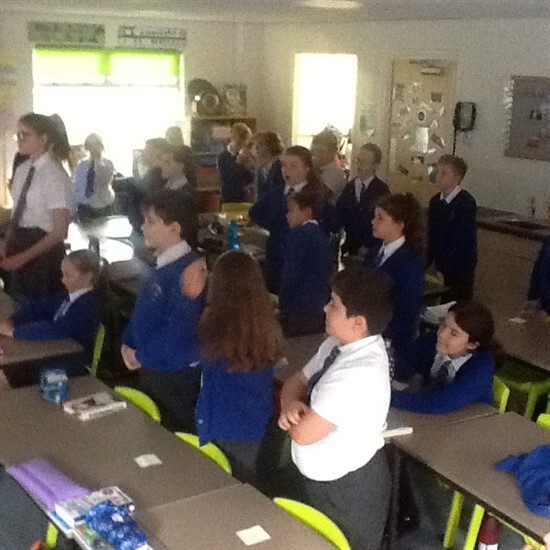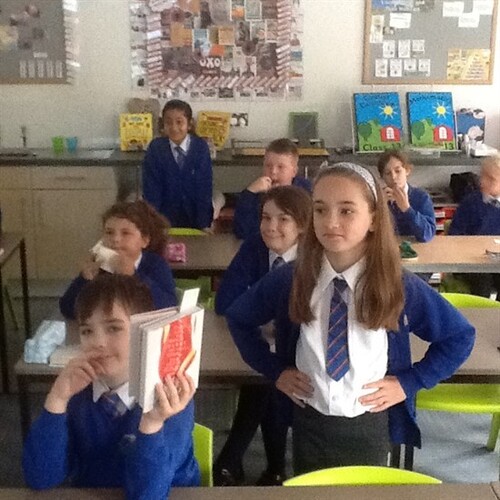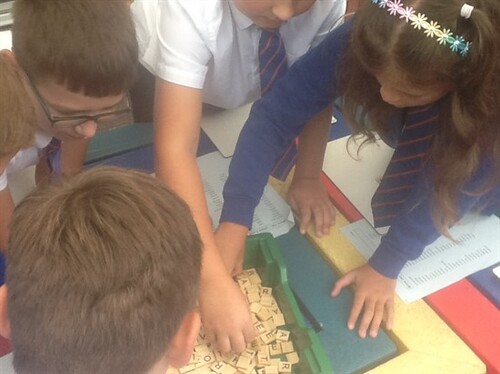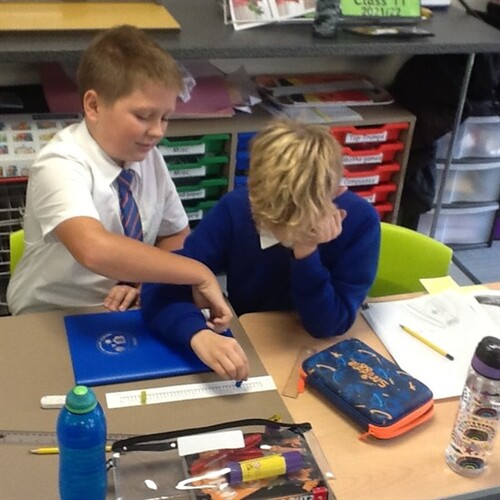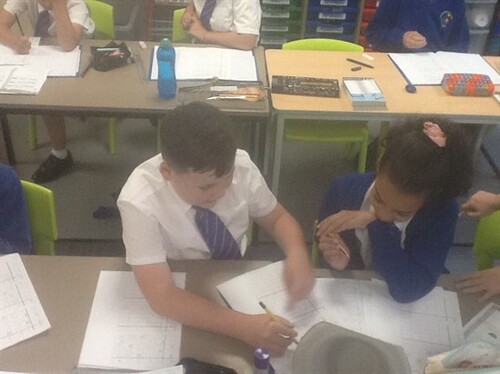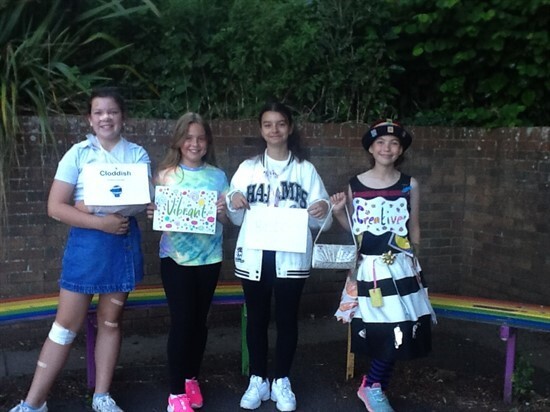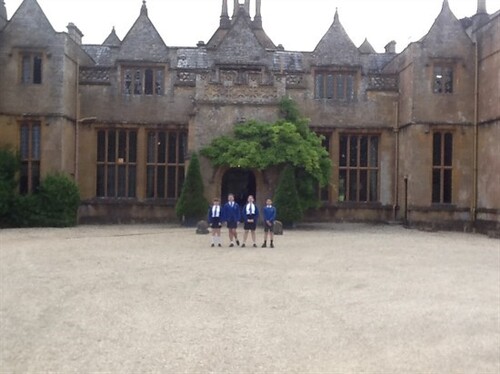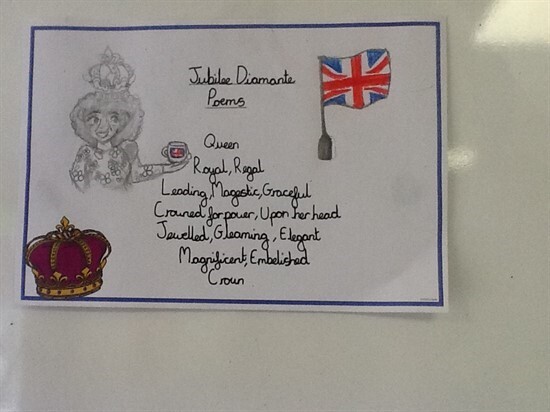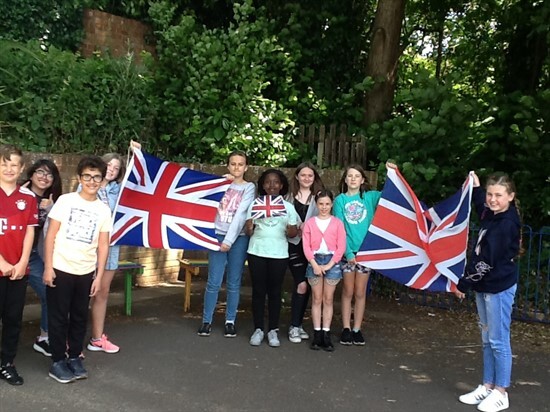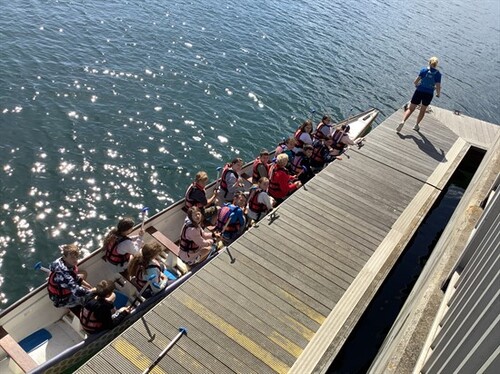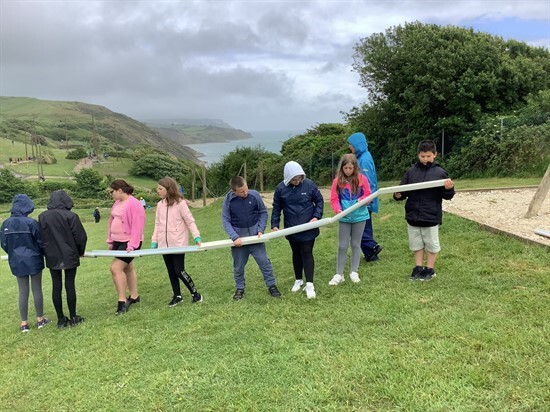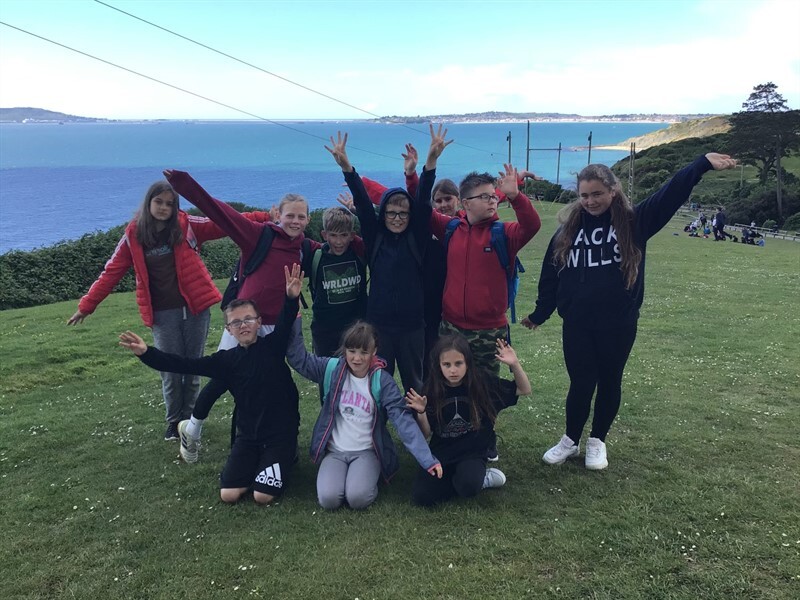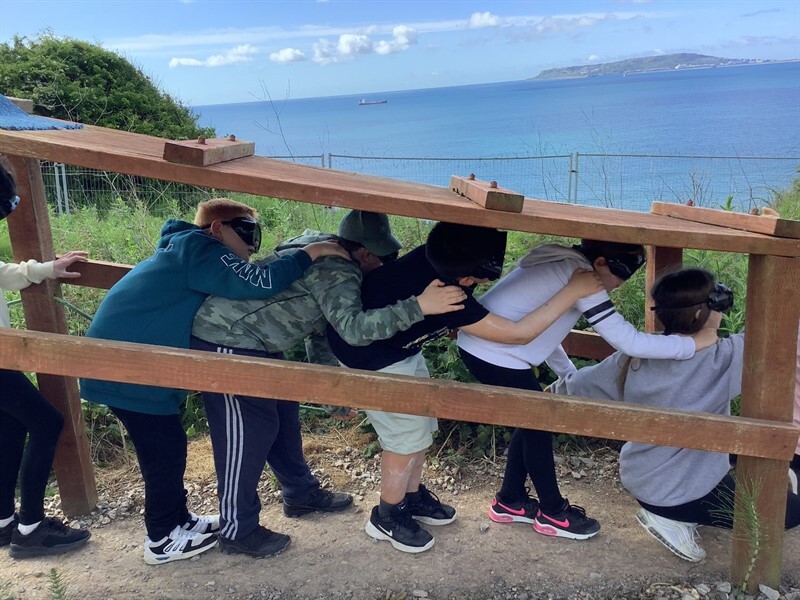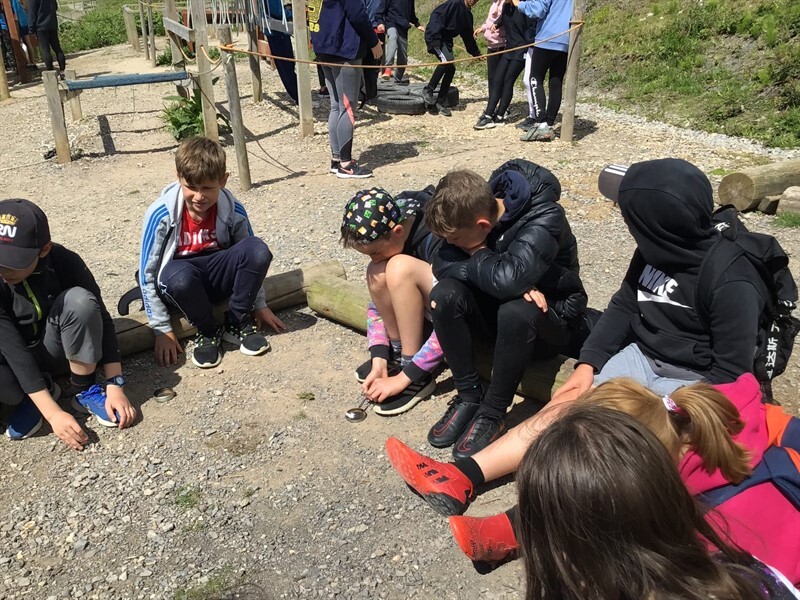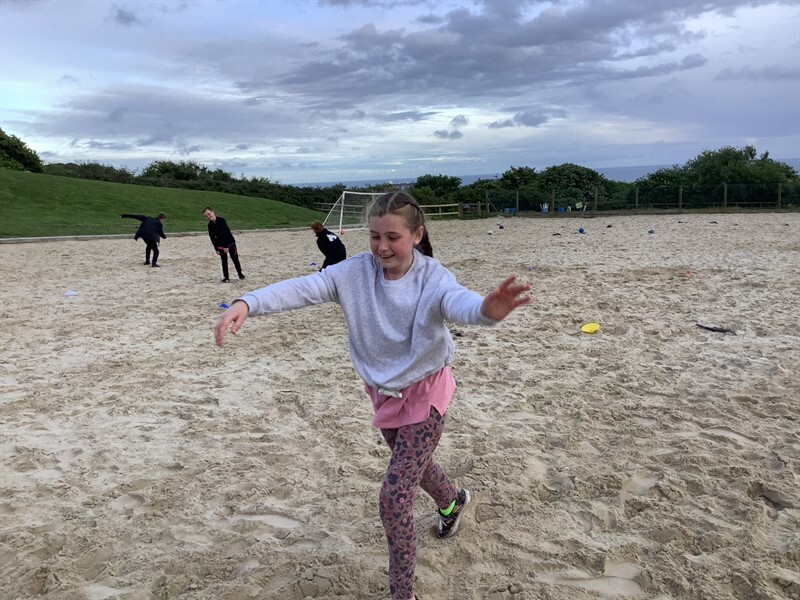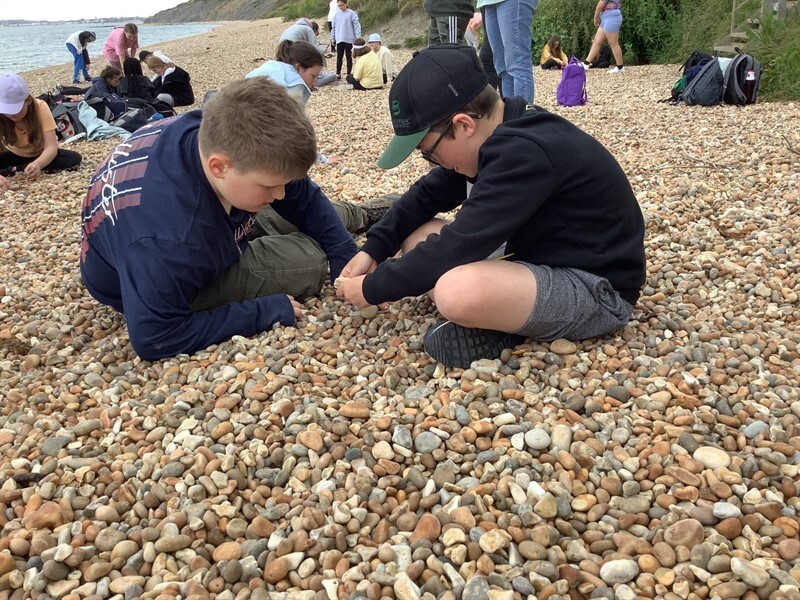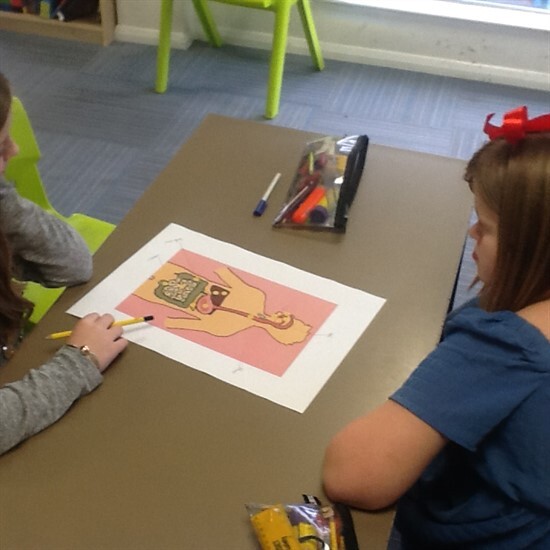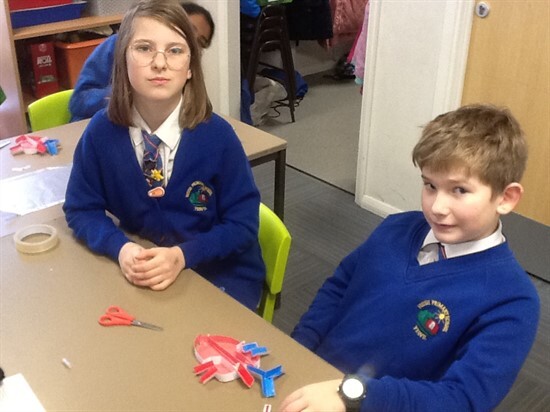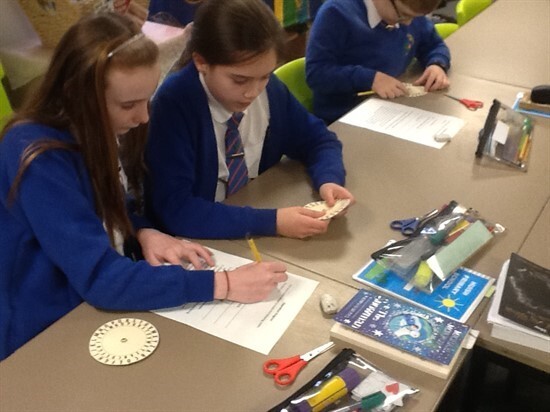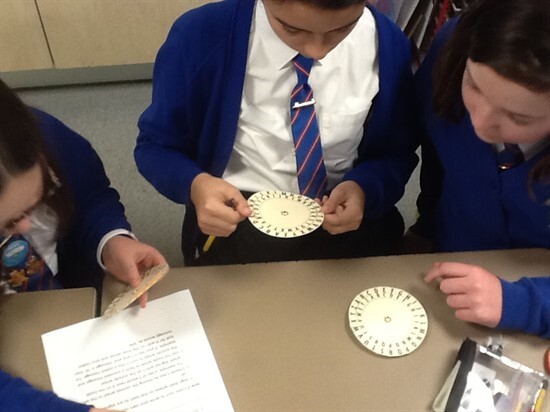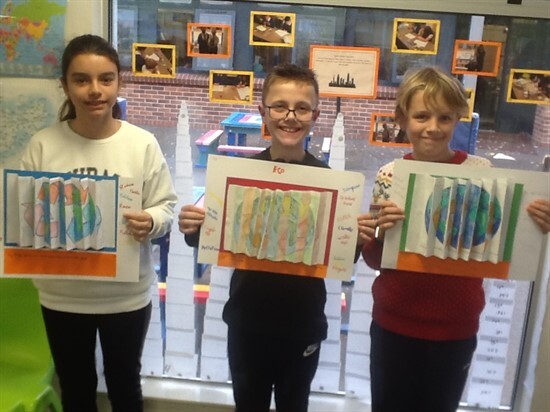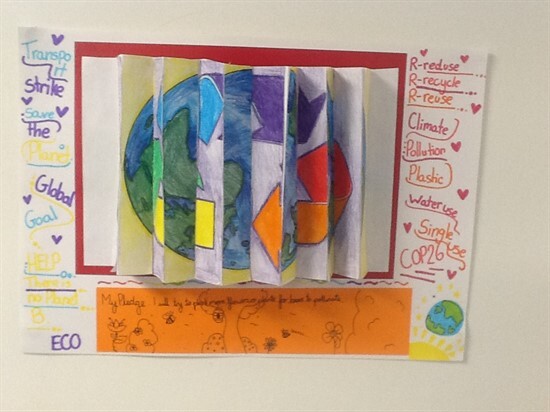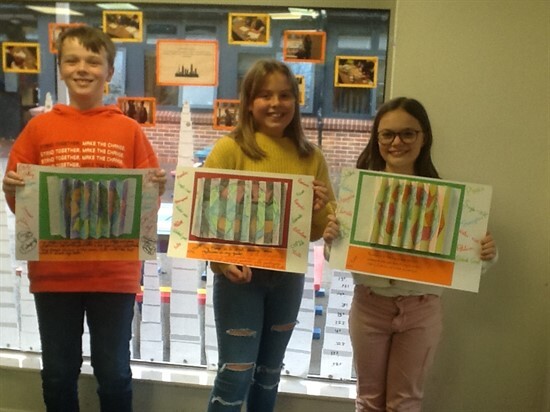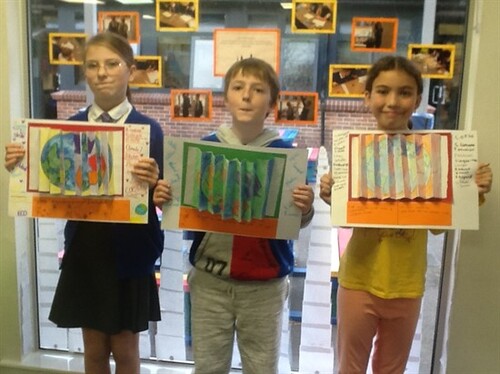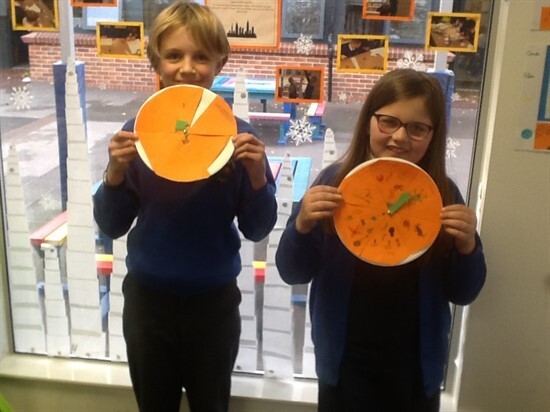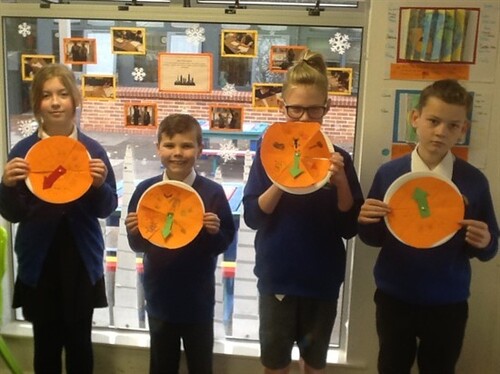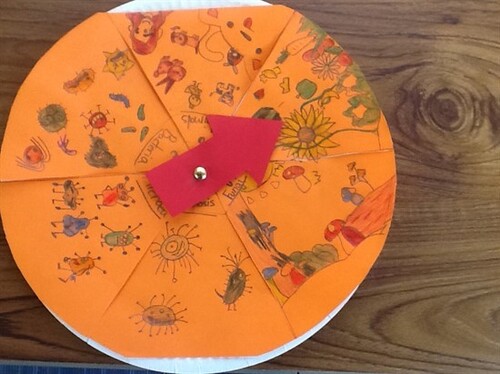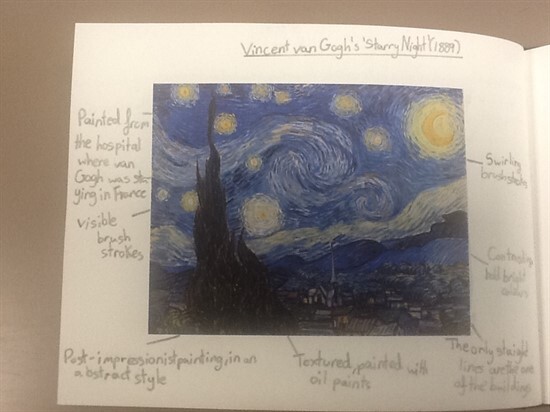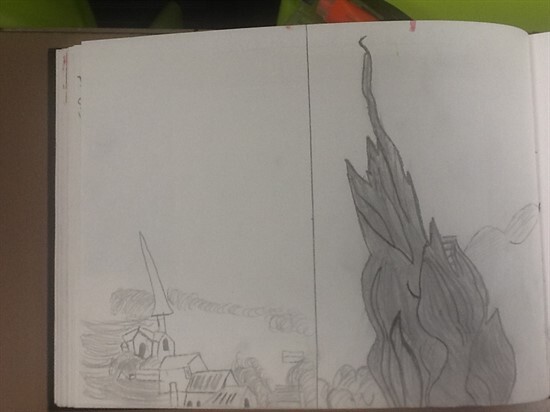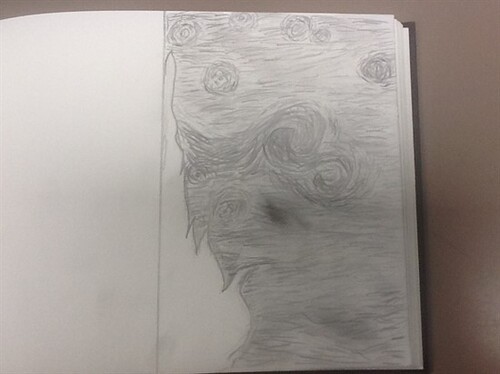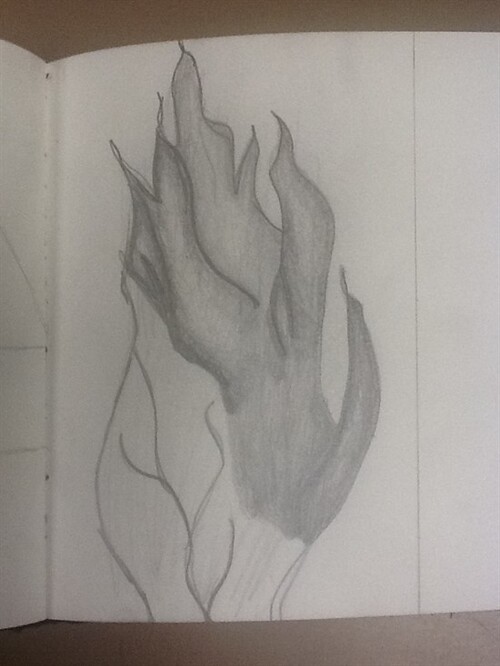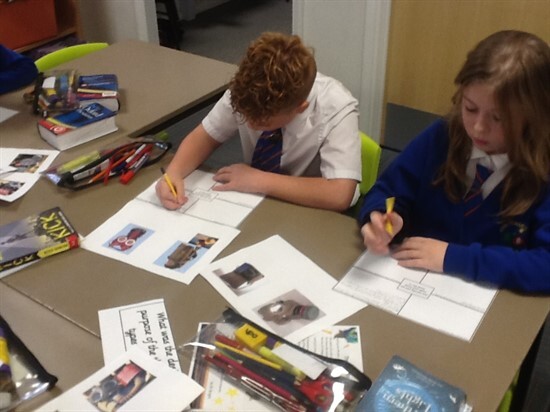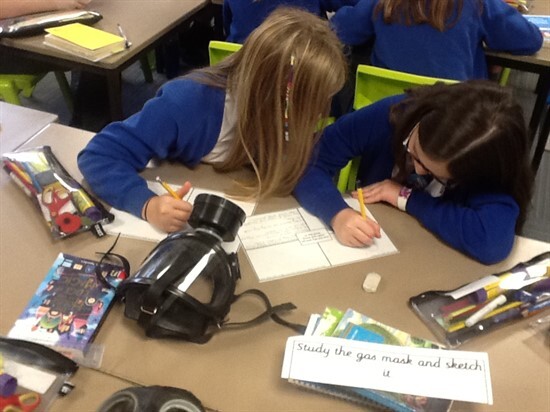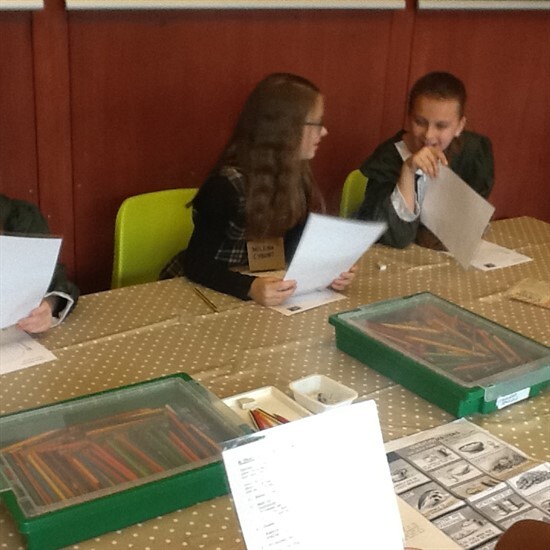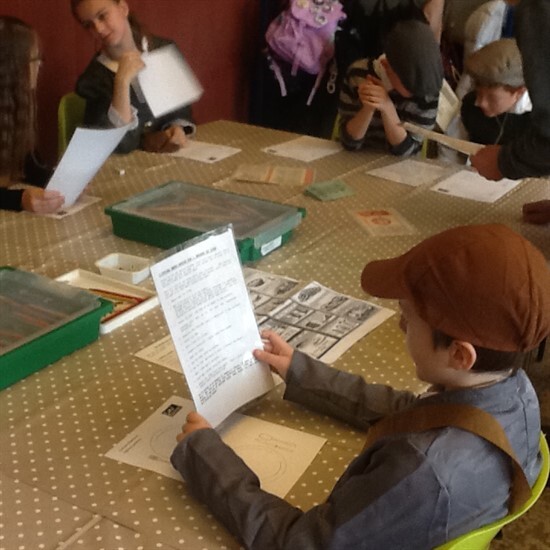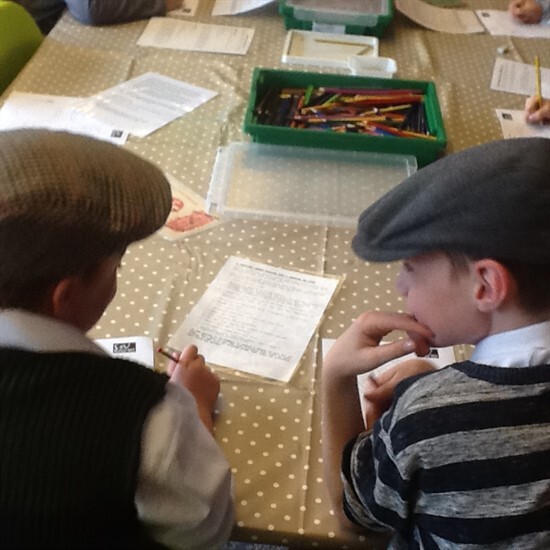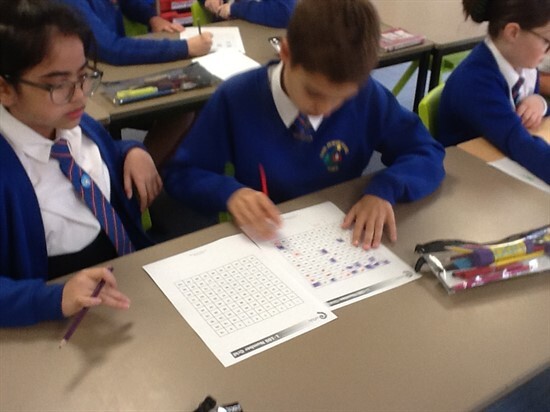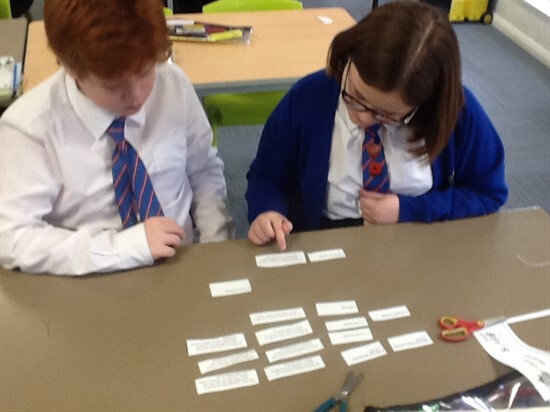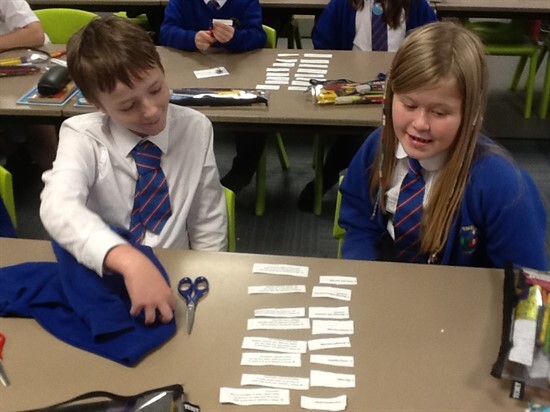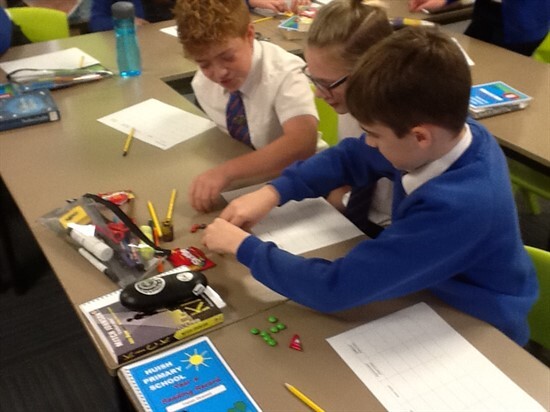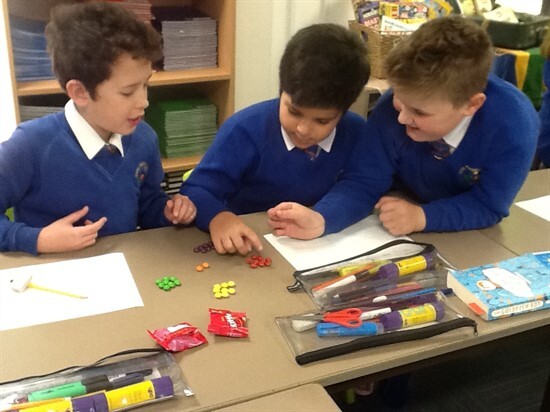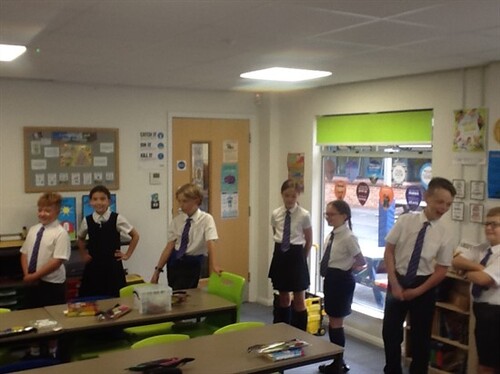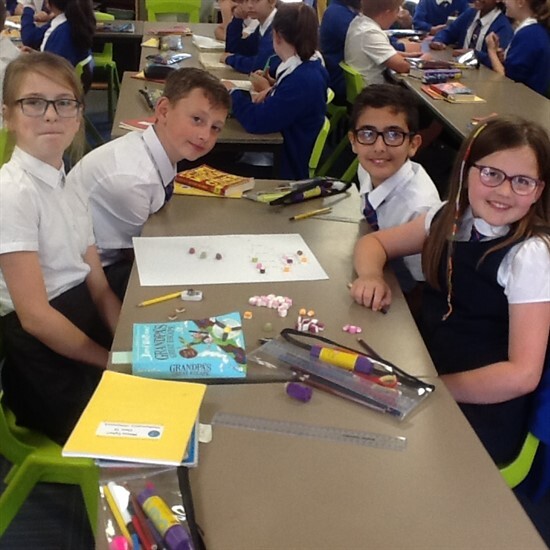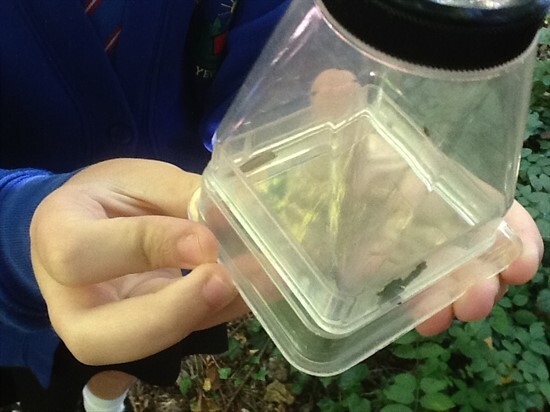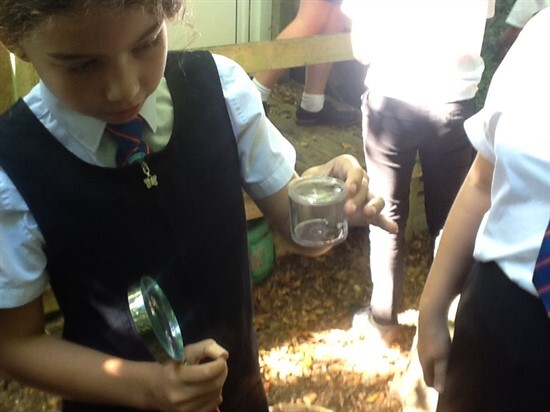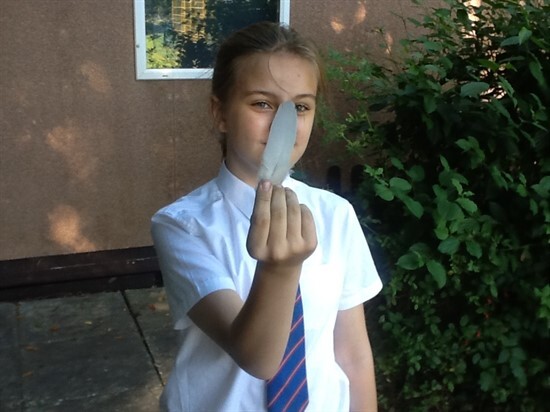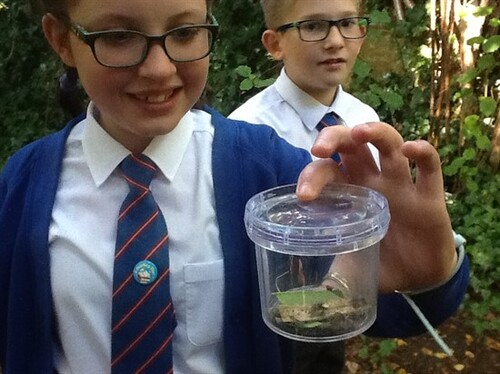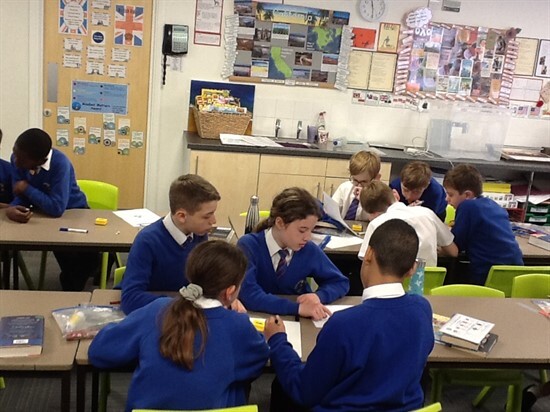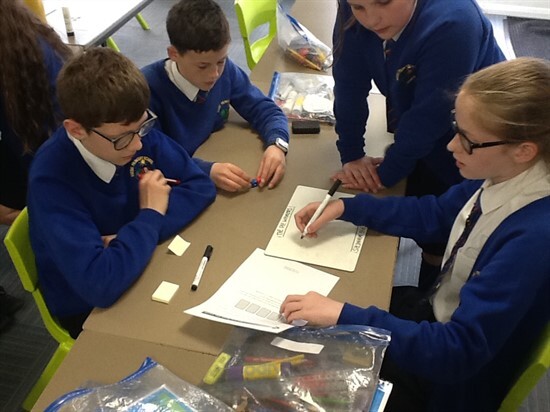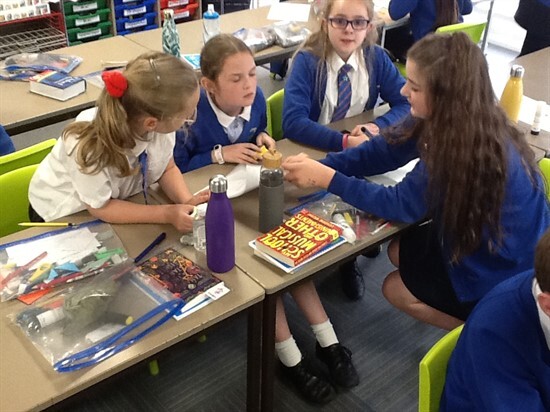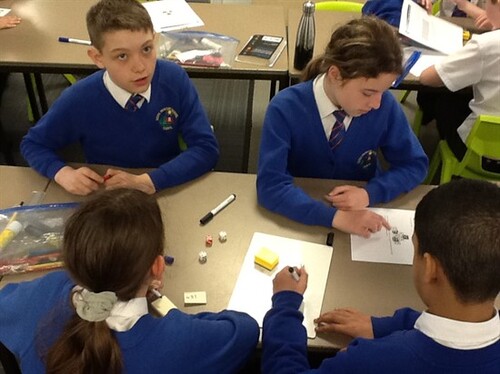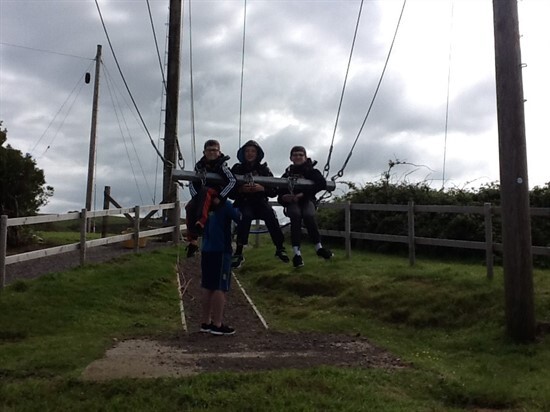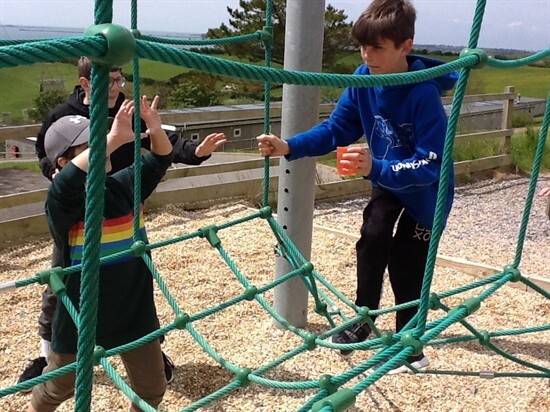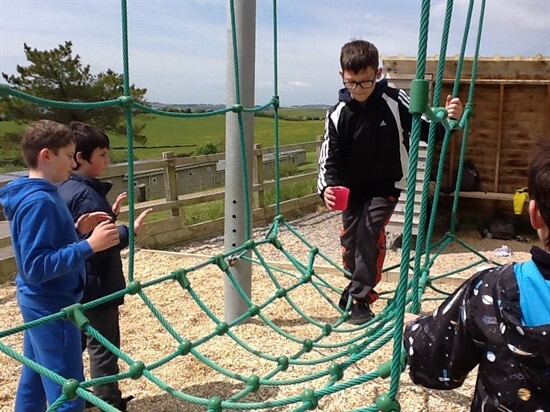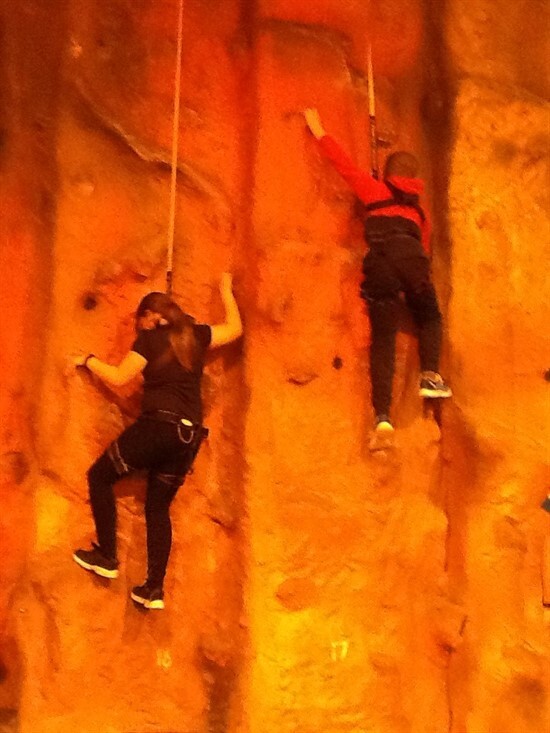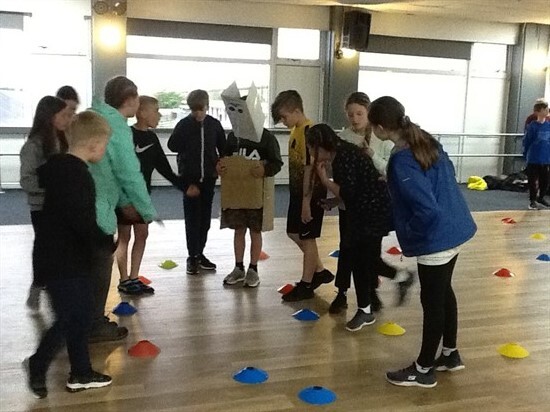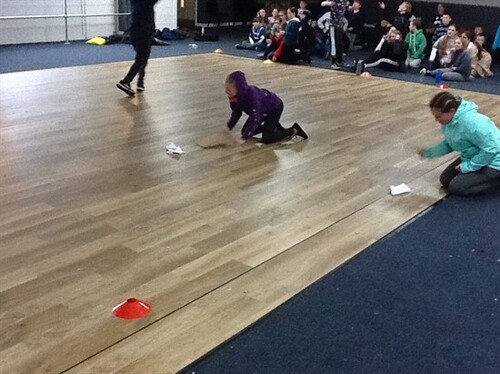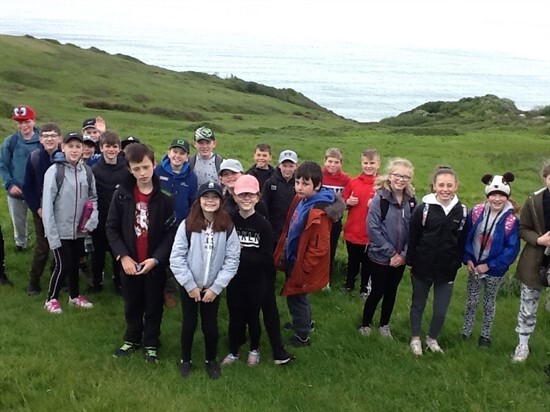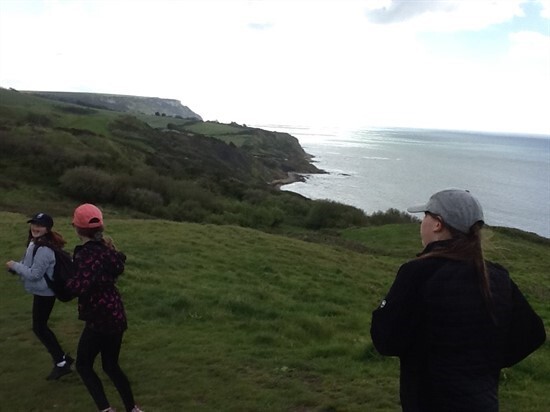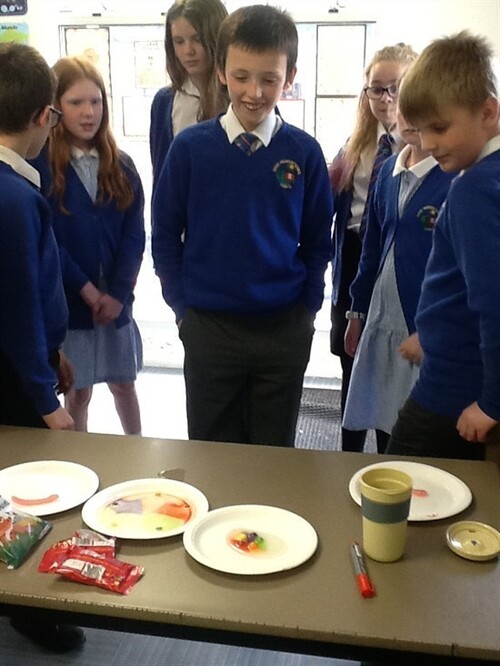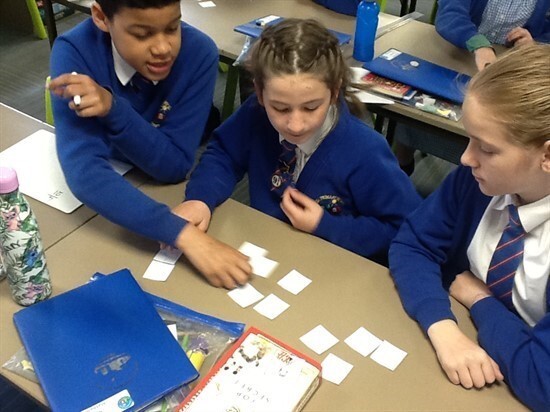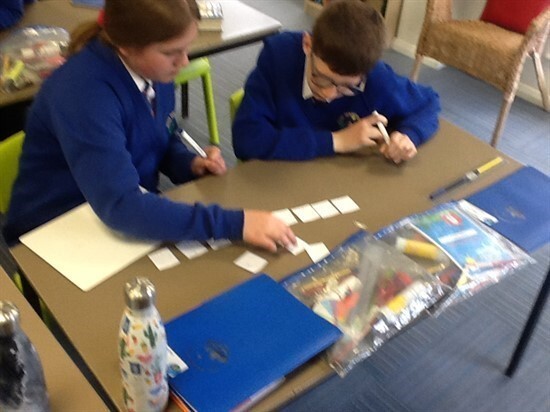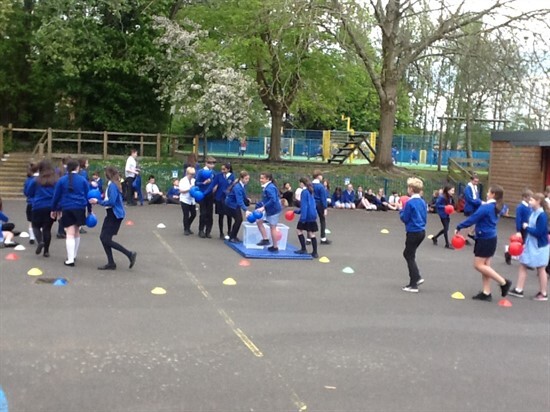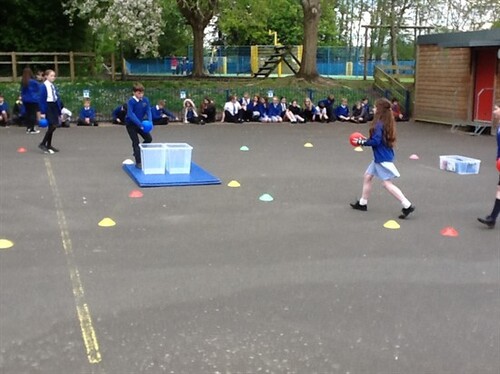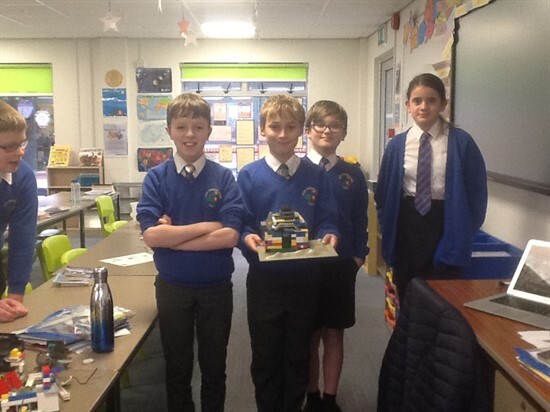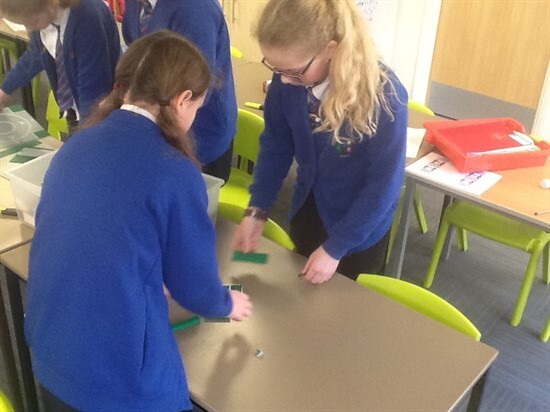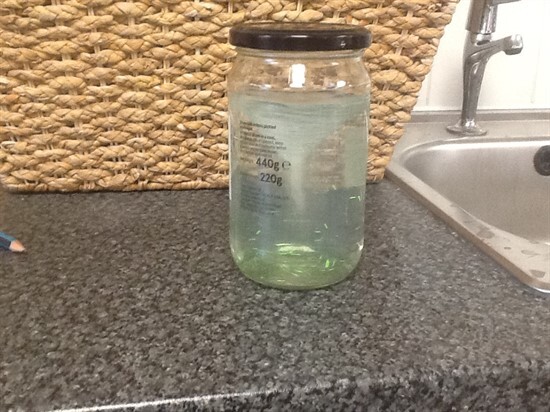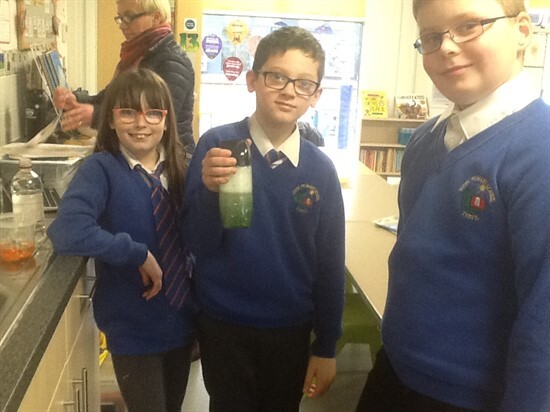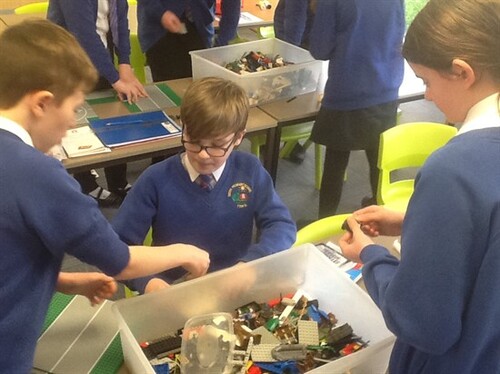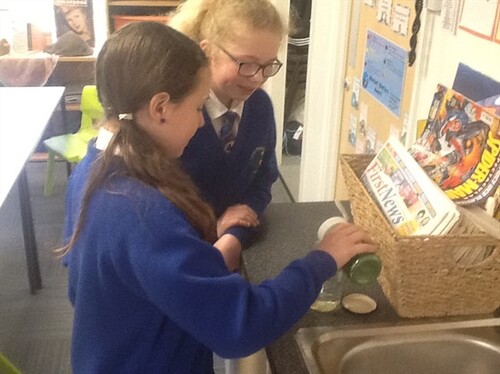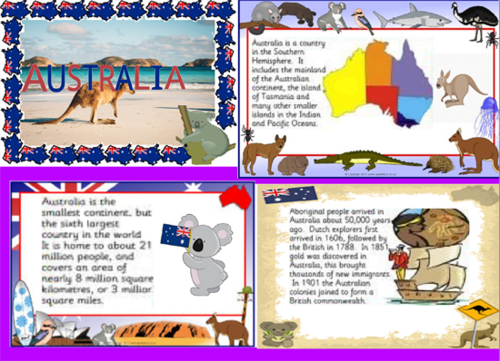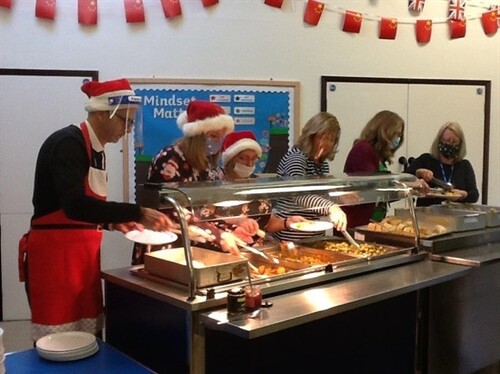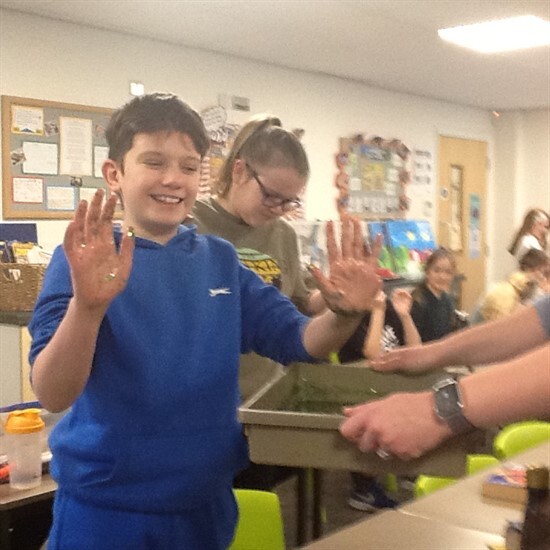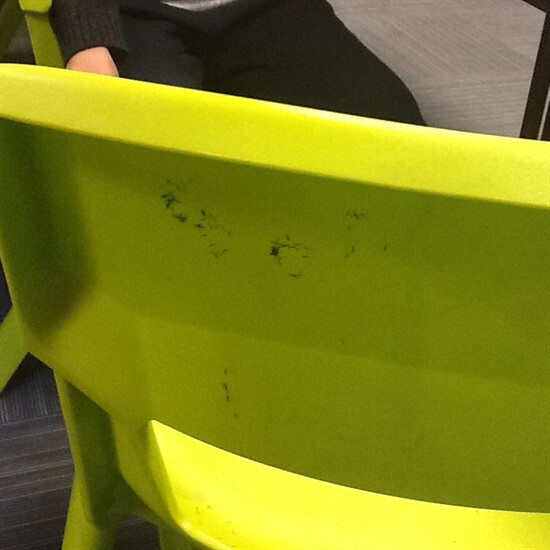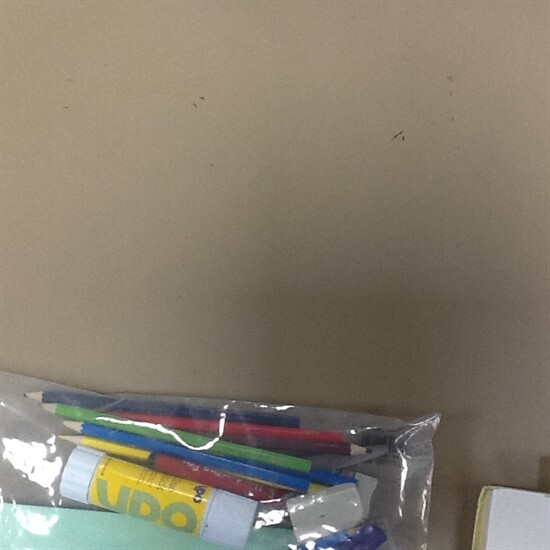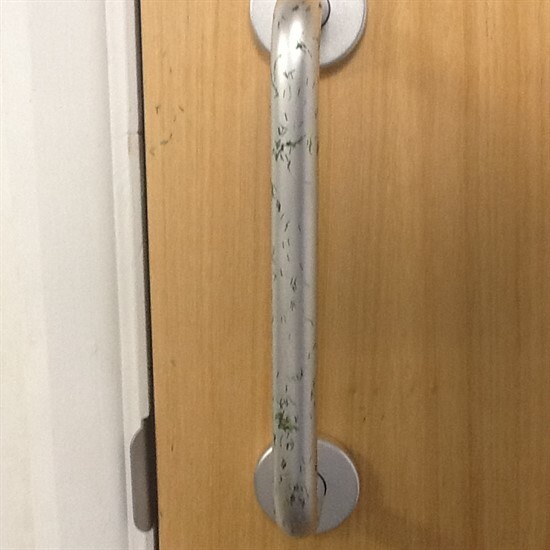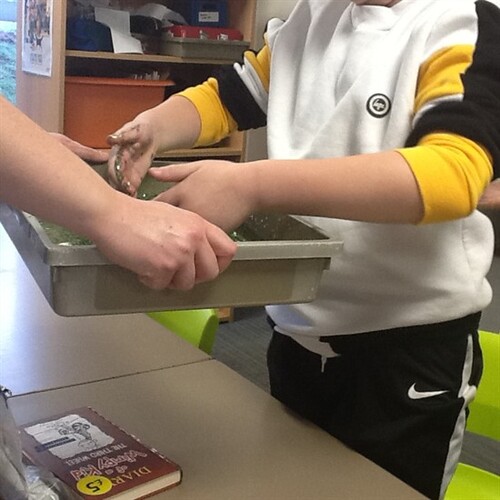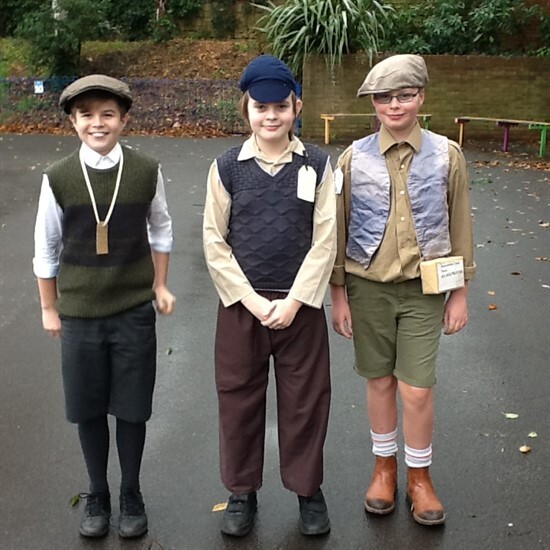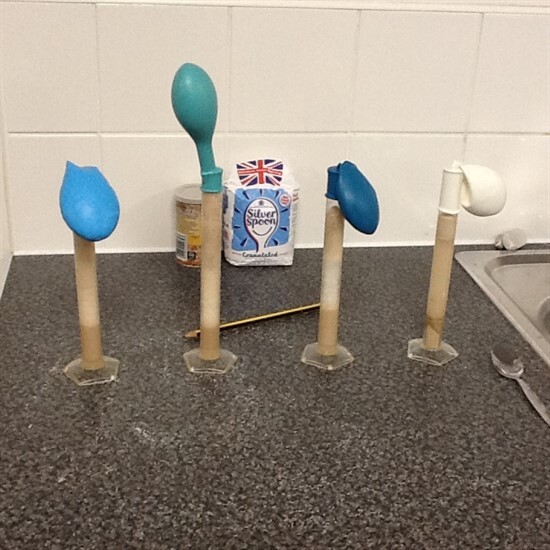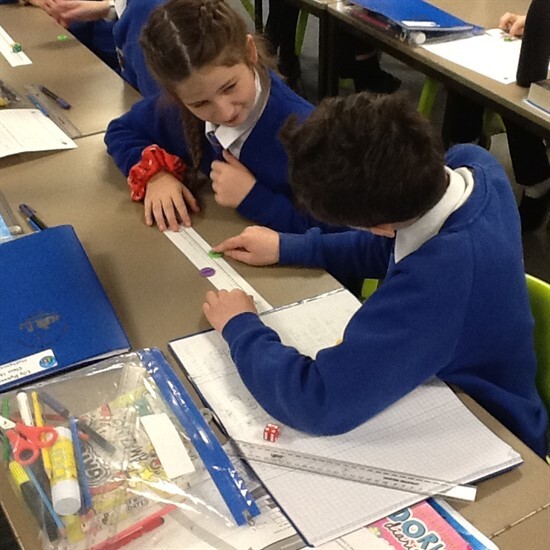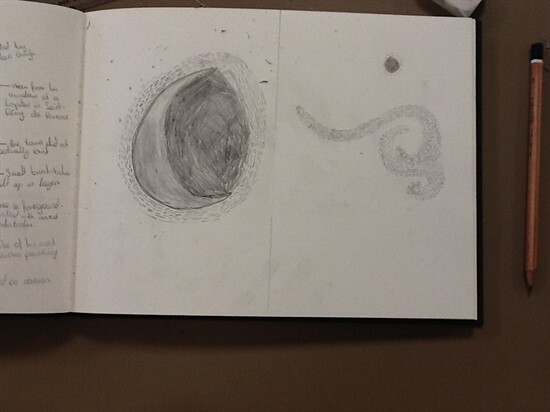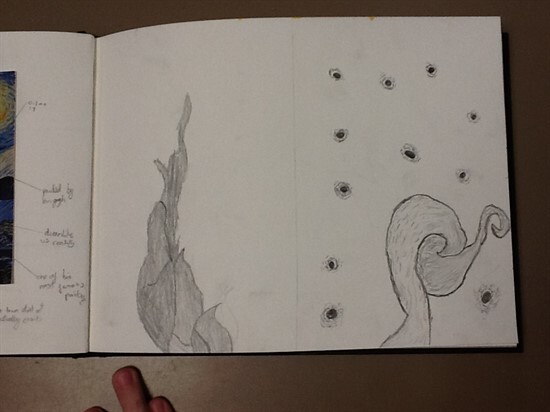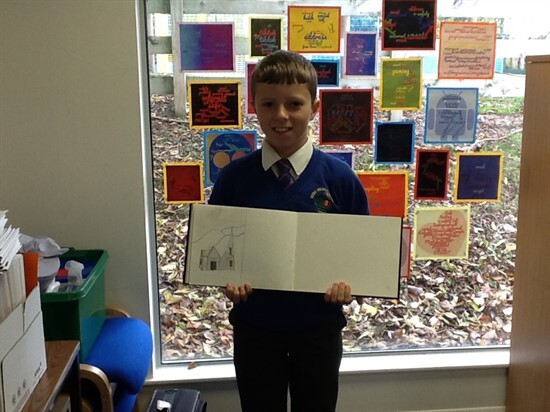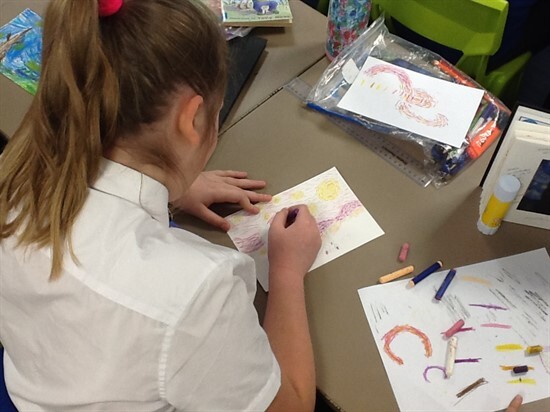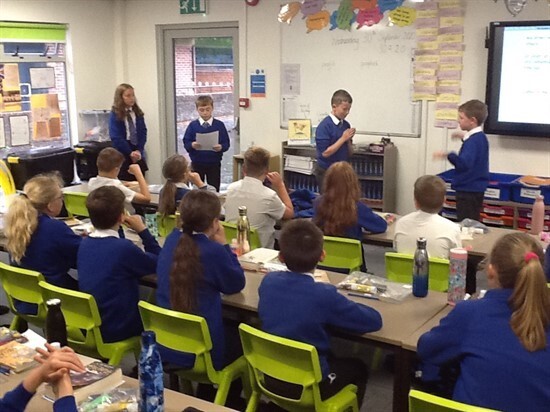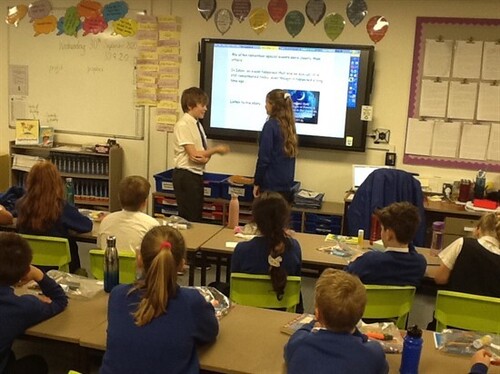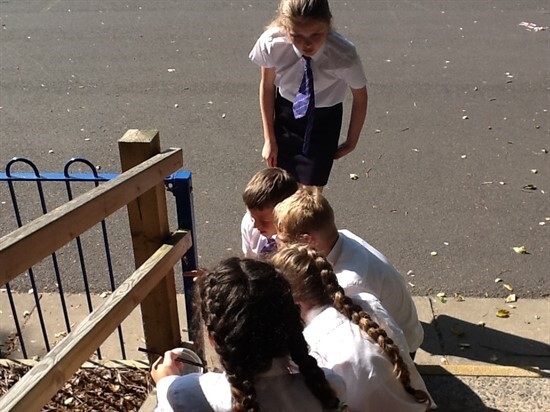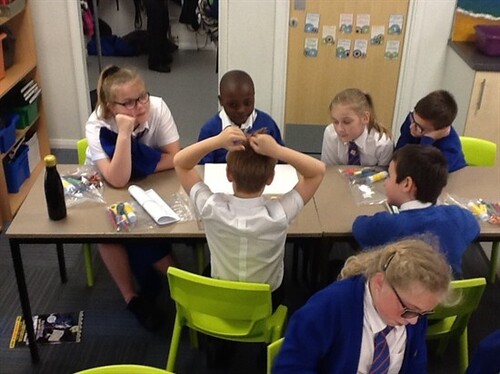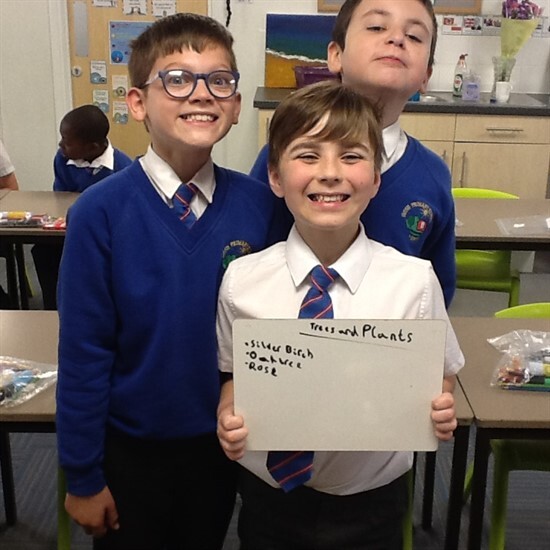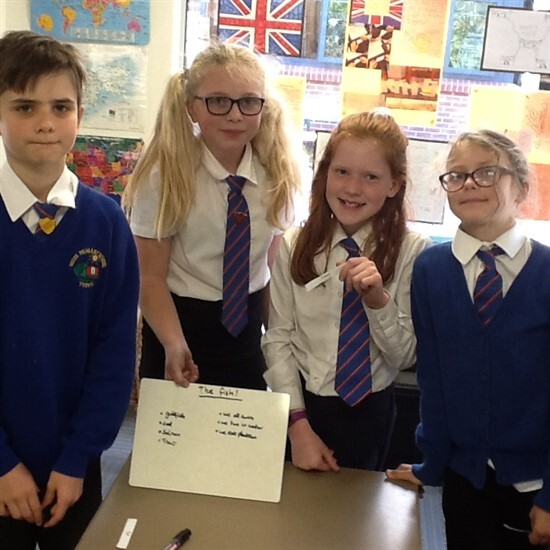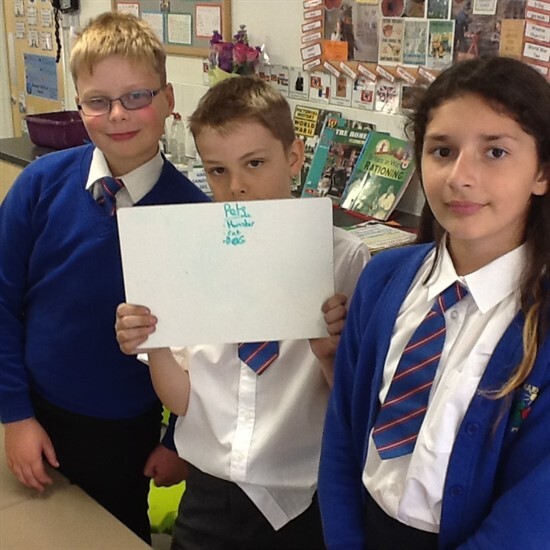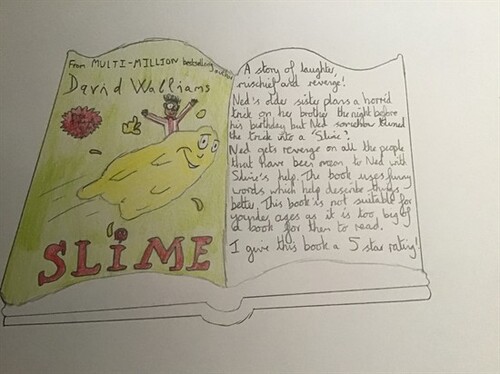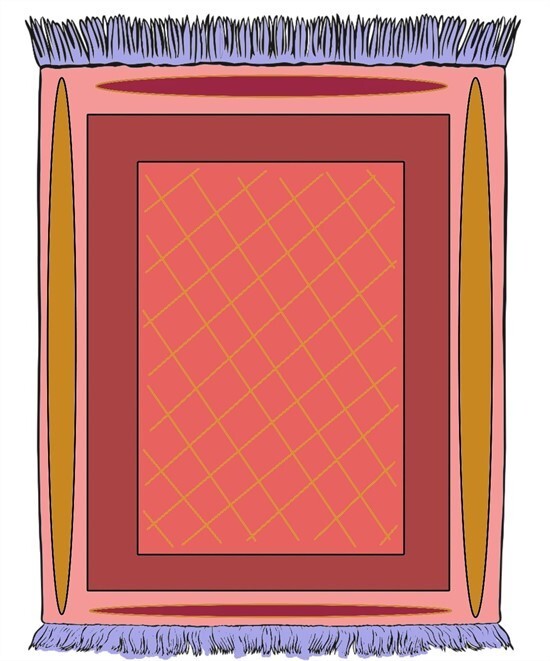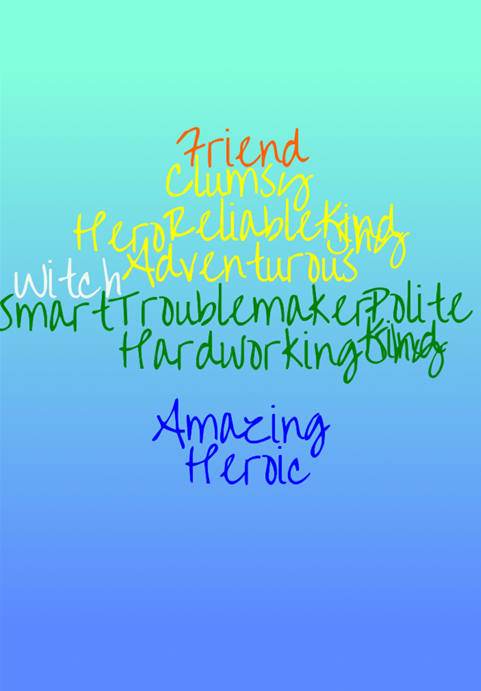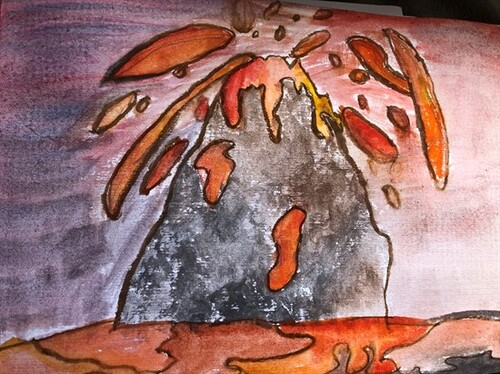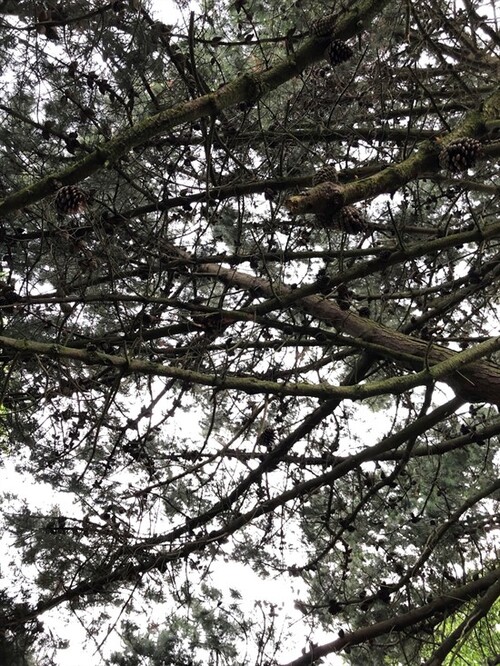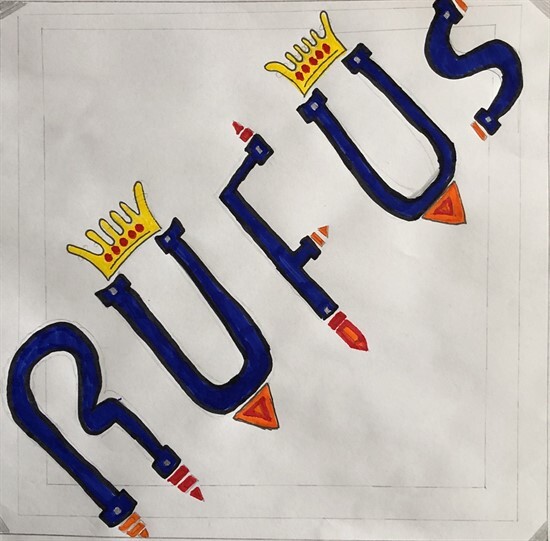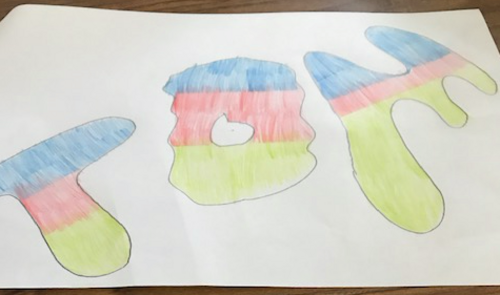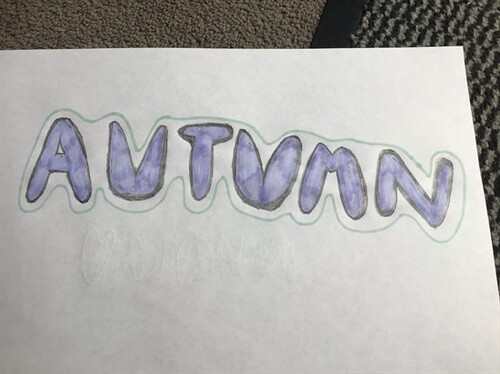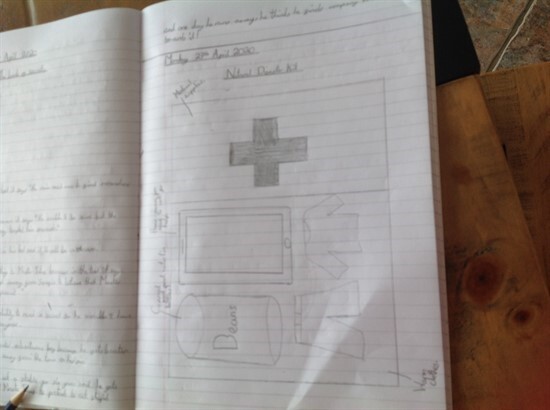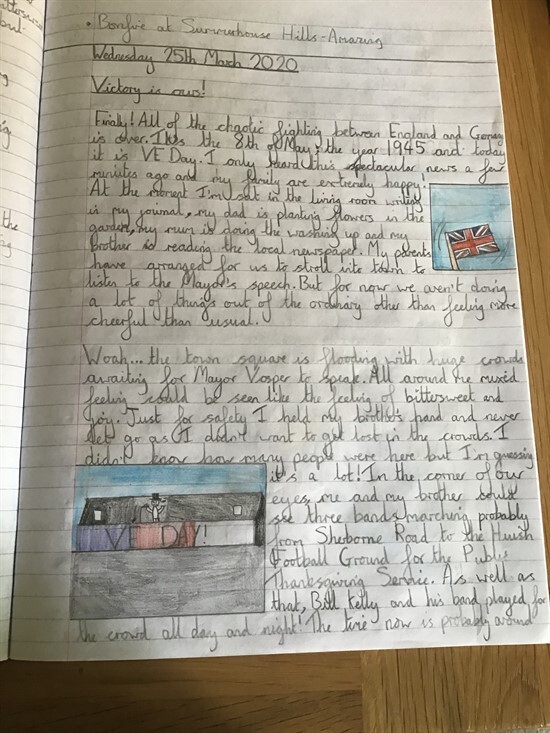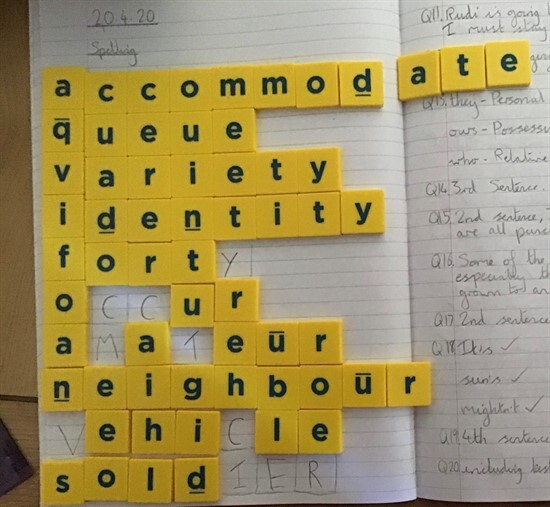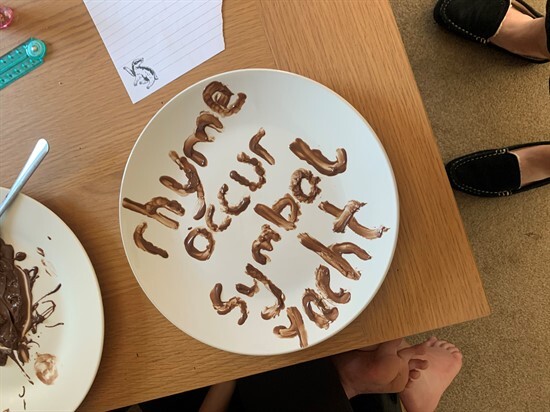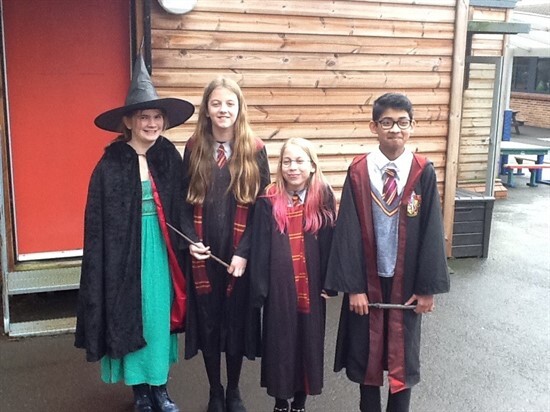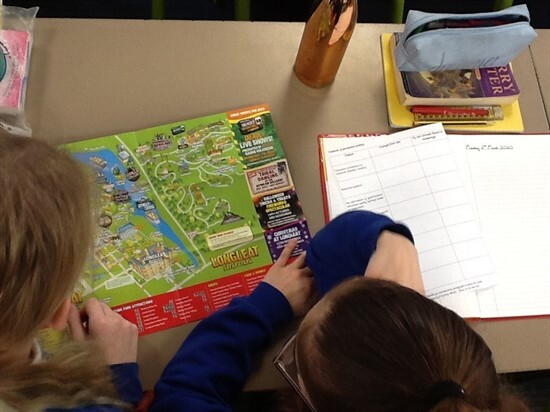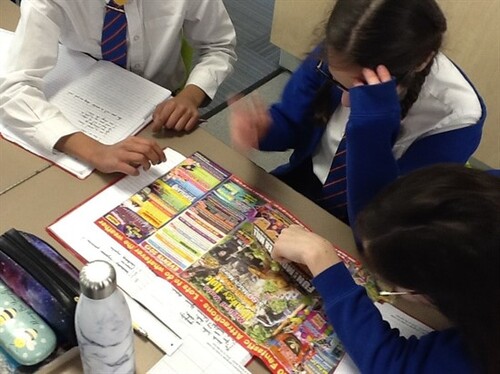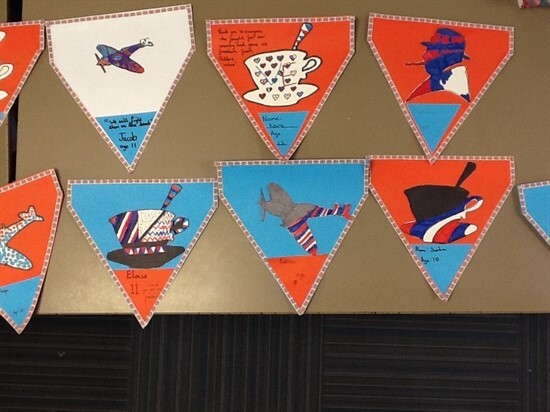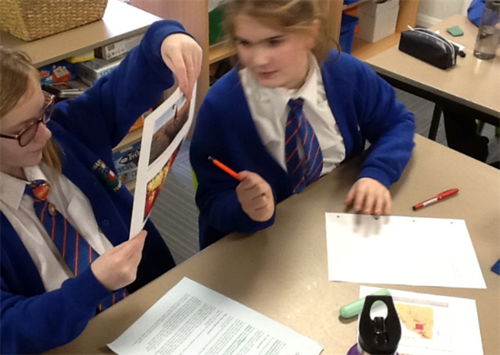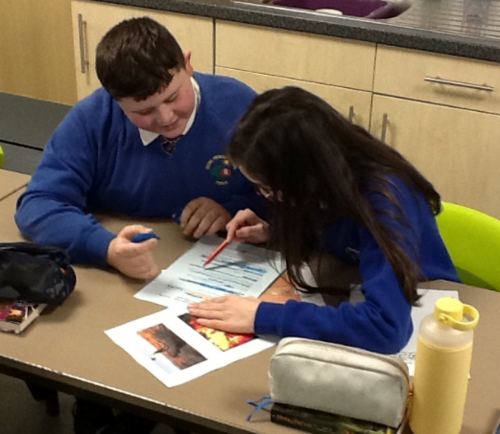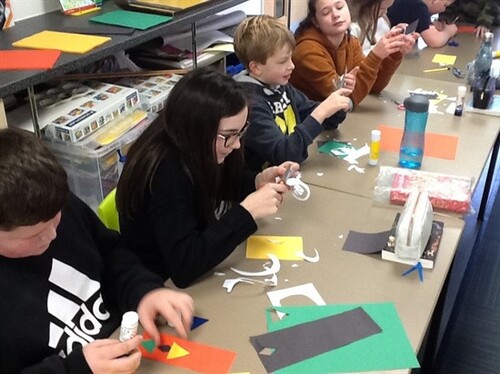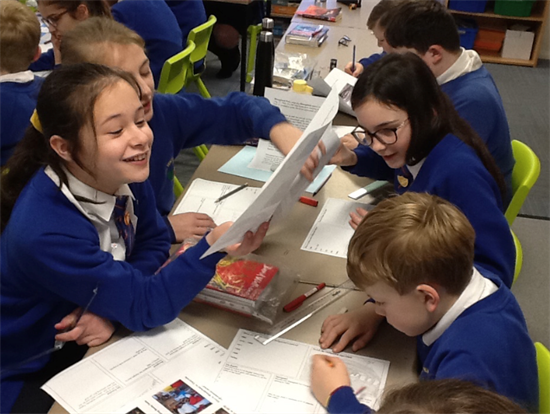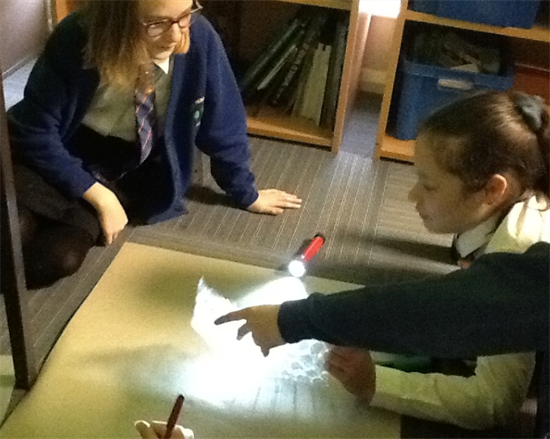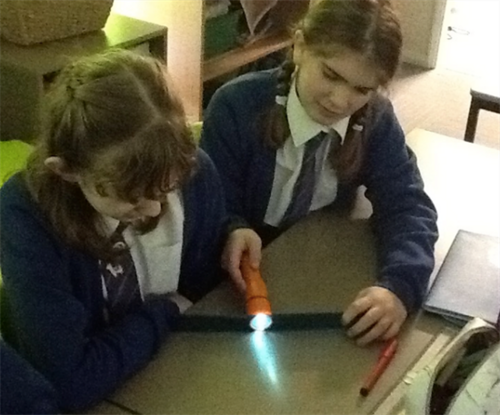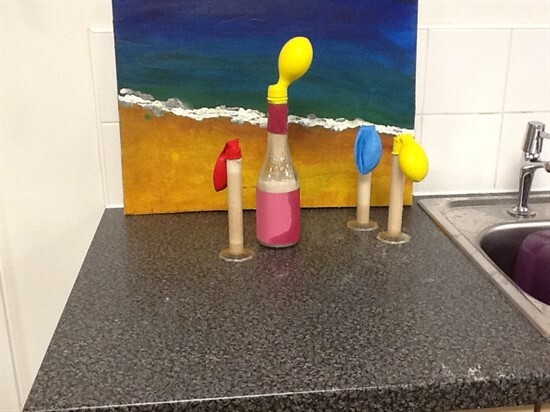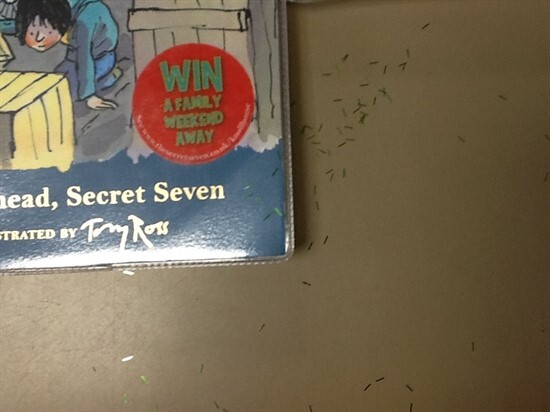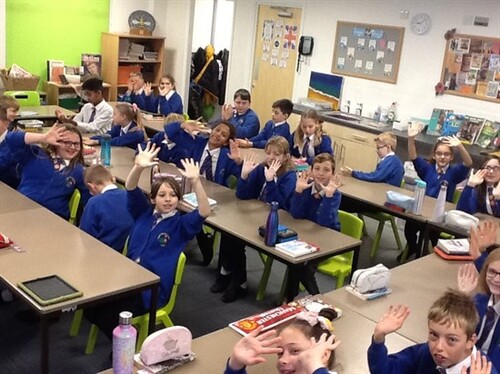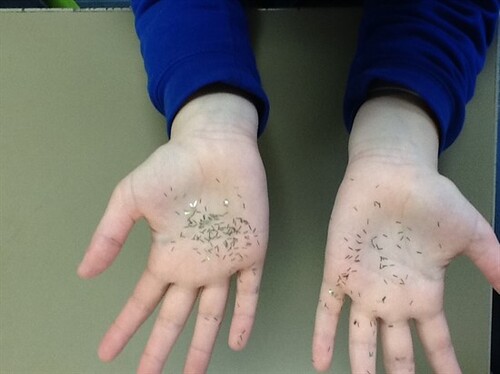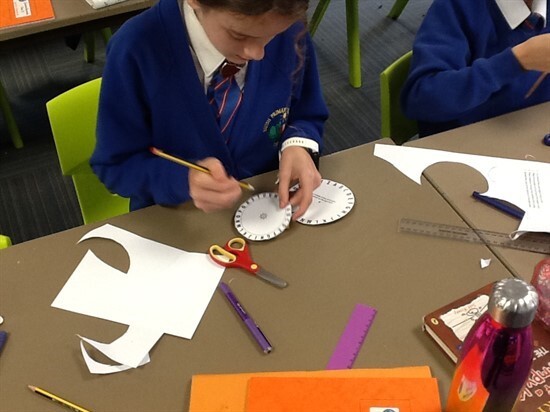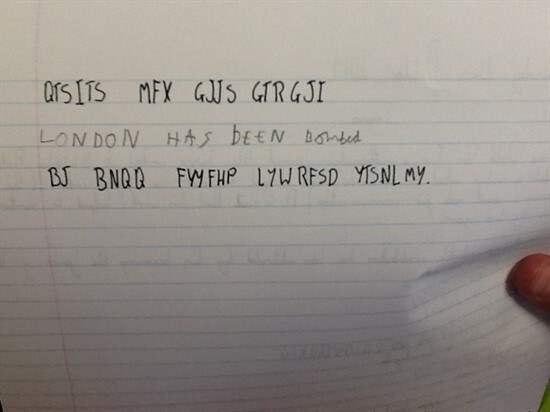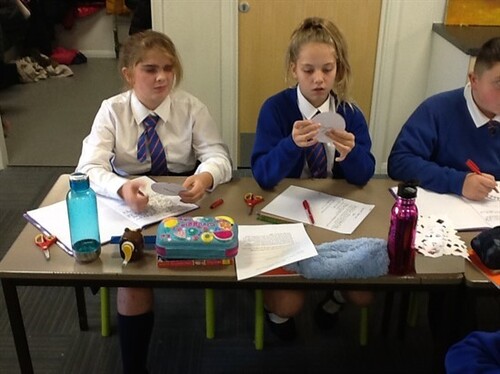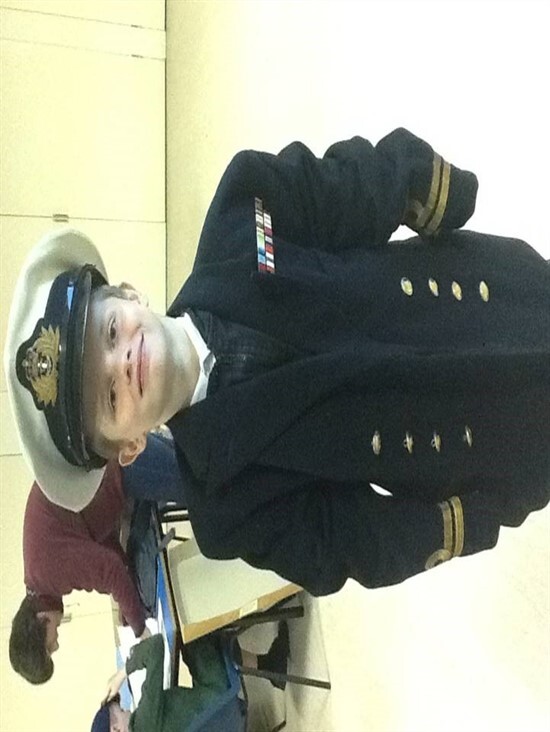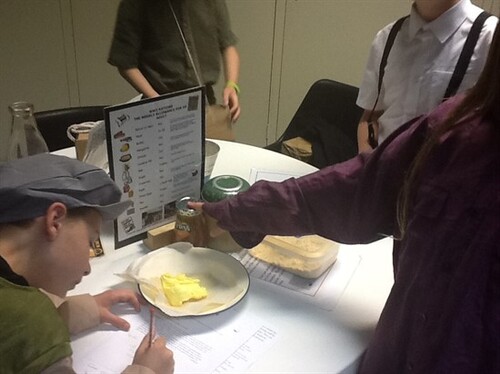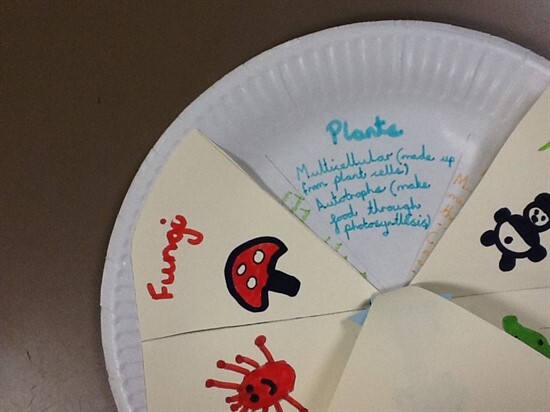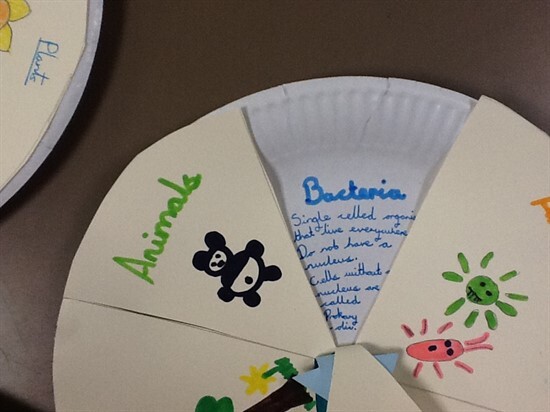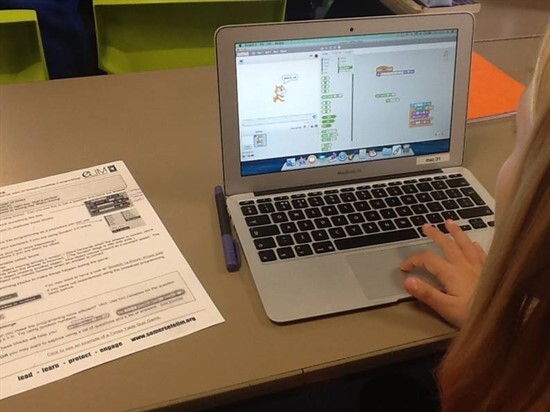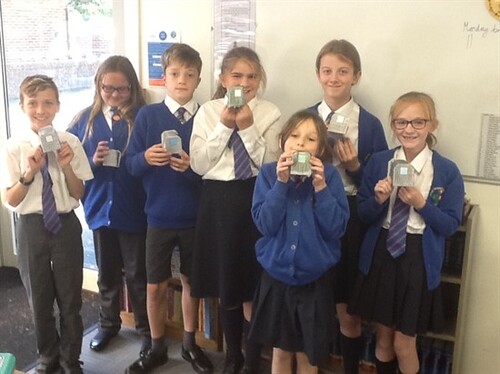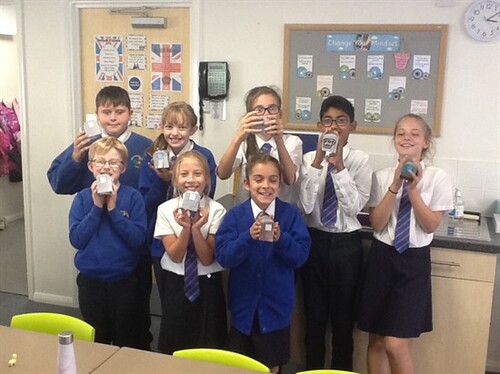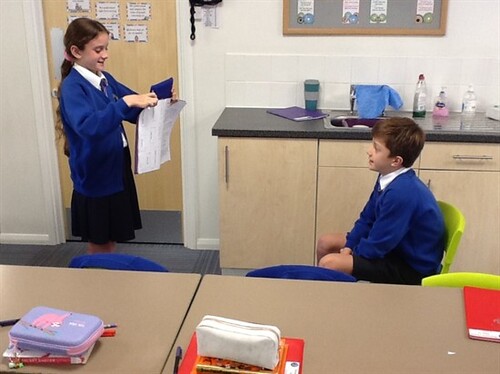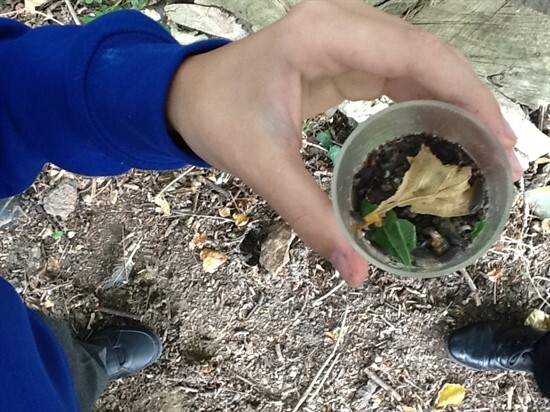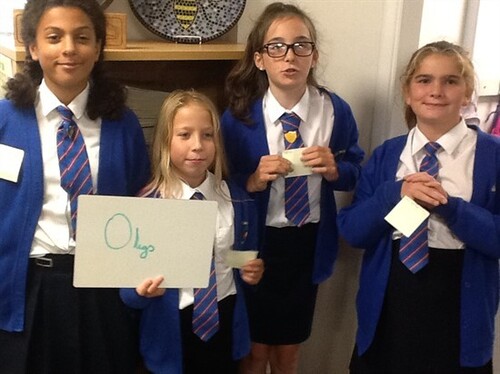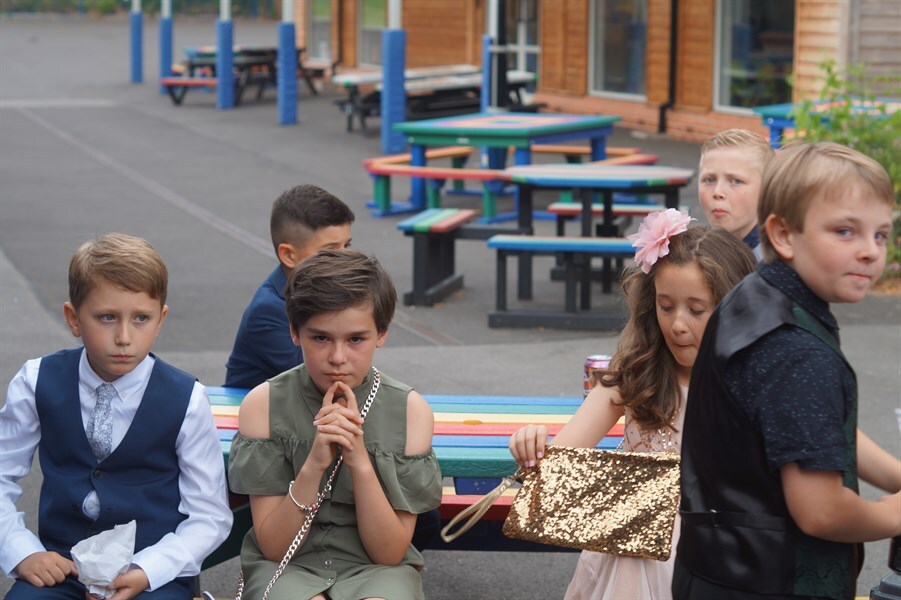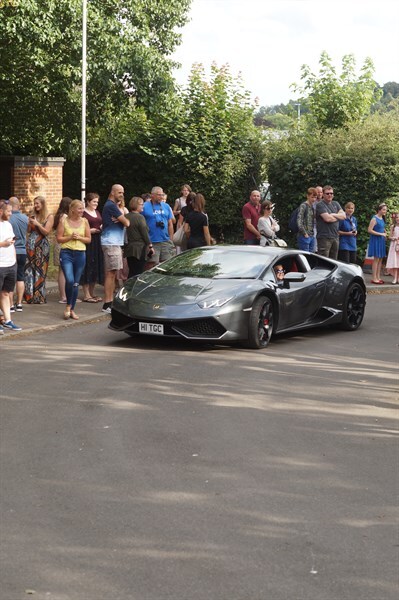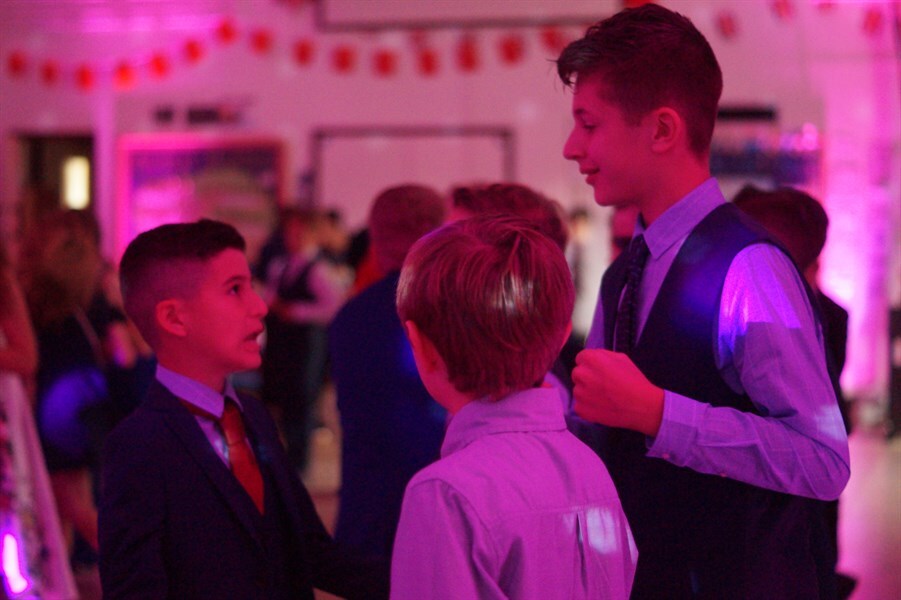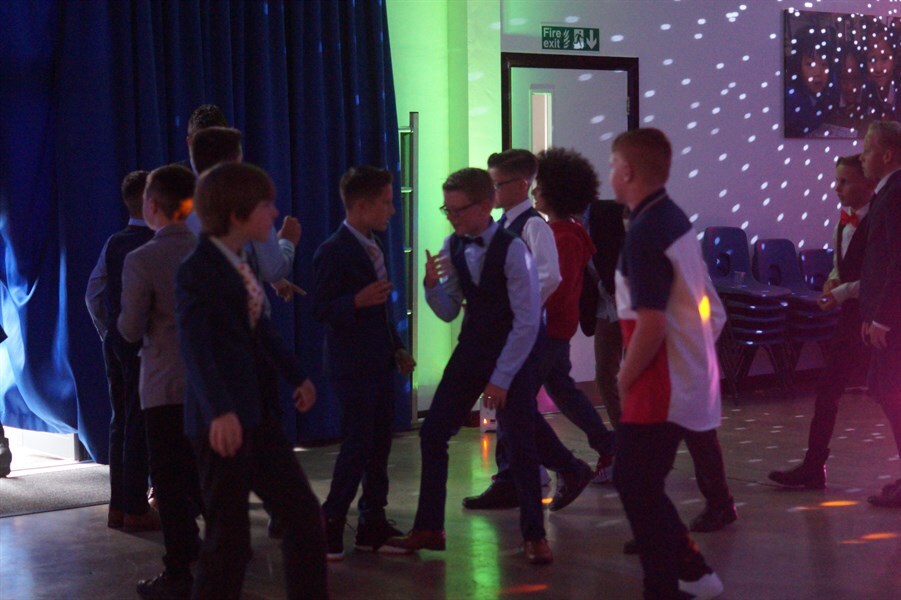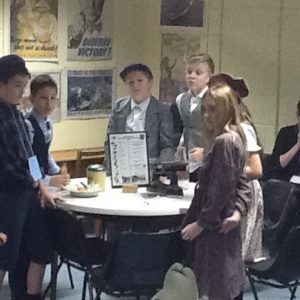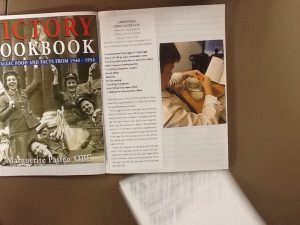Class 13
ACADEMIC YEAR 2025-26
Remembrance Assembly
Year 6 delivered a brilliant Remembrance assembly to children in KS2. Each class performed a Remembrance poem, which they had rehearsed in class. Class 13: For the Fallen by Laurence Binyon. Class 14: The Soldier by Rupert Brooke. Some children also read their own beautifully written Remembrance poems. Well done, year 6!
Maths - Square Numbers
In Year 6 Maths, we have been learning about square numbers. We made square number skyscrapers and had a competition to see who could make the tallest skyscraper using just one A3 piece of squared-paper.
Dichotomous Keys
Class 13 have been learning about how scientists classify living things. They have been working scientifically and using these skills to create dichotomous keys for sweets.
ACADEMIC YEAR 2024-25
Science
In science, Class 13 have been learning about Darwin’s finches and how they adapted to survive on the Galapagos Islands. We experimented with different ‘beaks’ and food to see which beak was the best suited to the different food sources.
Art Week
In Year 6, we have been learning about Bridget Reilly and the Op Art movement of the 1960s, which links to our recent science unit of light. We have also learnt about Escher and have created some art using tessellation inspired by him.
Vocabulary Day!
Class 13 had great fun celebrating ‘Vocabulary Day’. The effort that went into the costumes was outstanding – thank you to all the children and grown-ups at home for their hard work! We enjoyed connecting with Class 6 to share some new vocabulary, and in class, we wrote our own acrostic poems for the words we dressed as.
Refraction/Reflection - Science
We have been investigating refraction in water, how coloured filters affect what we see, the colour of light and what happens to our reflection in concave/convex materials. We made predictions before using the equipment to test it.
International Day - France
In Class 13, we celebrated International Day: France by learning about the geography and culture of France and creating a fact-file. We learnt common greetings, and, by the end of the day, were able to hold a short conversation asking someone’s name and how they are (and respond appropriately). In maths, we learnt to count in French, played some games and solved some French-themed word problems. Finally, we were set a challenge to use given materials to create a model Eiffel Tower – this was tricky but lots of fun! We had a great day and loved learning all about France.
Role Play - Geography
We have been learning about the Gold Rush in California, which began in 1848 with the first discovery of gold at Sutter’s Mill. We learnt about the mass migration of people to California (most of whom arrived in 1849) and the three main routes - and their associated risks - people travelled via. We performed a short role play in character.
Electric Circuits - Science and DT
We have been revising our knowledge of electric circuits and learning the correct symbols for recording them. We used this knowledge to create circuits for our steady hand games. We designed and made the games before playing and evaluating them.
Bikeability
Students in Year 6 had the pleasure of taking part in the Bikeability training program. They learnt skills to keep them safe on the road and ensure they know how to ride their bikes correctly. After an assessment on the playground they took to the roads to demonstrate their knowledge.
World War II
During the Autumn term, Year 6 have been learning about what life in Britain was like during WWII. To round off this history unit, Year 6 were involved in a WWII day where they got to experience drill, dress up, discuss what food was rationed and learn about code breaking and morse code.
House Captains
Congratulations to all the Year 6 children who were appointed as House and Vice Captains!
Dichotomous Keys
Class 13 have been learning about how scientists classify living things. They have been working scientifically and using these skills to create dichotomous keys for sweets.
ACADEMIC YEAR 2023-2024
Science: What Evidence is there of Evolution?
We have been learning about the work of Charles Darwin and Alfred Wallace and the theory of evolution. We learnt about the finches Darwin found in the Galapagos on his famous voyage and designed our own experiment to test different types of beak: probing, grasping, crushing and scooping. Our results were quite varied, and some of us think we could improve our method and make it fairer if we were to repeat the investigation.
Geography
We have been learning about tectonic plates, plate boundaries and the San Andreas Fault. In particular, we learnt about the earthquakes that rocked Ridgecrest, California in July 2019. We prepared and performed news reports about the quakes.
Life Bus
Class 13 took part in the SCARF Decisions workshop this week. They took part in a range of discussions and activities about decisions, choices, risks and their own health and wellbeing.
DT - Levers and Mechanisms
We have been learning about levers and mechanisms to design and make our own pop-up books for a year one audience. We themed our books around nursery rhymes and made them colourful, bright and attractive. We thought about the size of the writing and vocabulary used for the target audience. We used a range of pop-ups, levers and mechanisms to make the books interactive and fun to read.
Pro-Strike Challenge
Recently, Huish welcomed Pro-Strike and all children took part in the penalty speed challenge. It was great fun! The fastest penalty in year 6 was 81 kmh, which was faster than any of the adults who also had a go during the day! Thank you to everyone who sponsored the children.
Earth Day
To celebrate Earth Day this year, Class 13 have been learning about climate change, its causes and some of the activities fighting against it. They made agamographs and wrote their own climate pledges.
Year 6 Science Week
During Science Week 2024, Year 6 have been ‘meeting’ their brain. Learning from neuroscientist Dr. Turk, from Bristol University, we have learnt what the brain looks like, the different areas of the brain and their functions and how the brain works. Each session this week has been accompanied by interesting facts and fun activities – from testing our brain speeds to creating brain hats! It has been a fascinating week of learning for us all; as well as teaching us lots, we have also learnt about careers in neuroscience.
In addition, we took part in the whole-school candle making. After learning all about honey bees from expert Gary Packer, we made our own beeswax candles before teaching children in Class 6 how to make them later in the day. It was a lovely opportunity to connect with Class 6 again. We were also lucky that Mr. Opie came to talk to us about his bee-keeping, and we were able to look at some of the tools used and try on some bee suits!
World Book Day
We loved dressing up as some of our favourite book characters today. We also enjoyed a book-themed emoji quiz and wrote our own poems, based on Julia Donaldson’s, ‘I Opened a Book’.
West End In Schools
Today, we participated in a drama workshop based on the book, ‘Anisha, Accidental Detective’. During the work shop, we took part in several activities: warm-ups, character acting, freeze-framing, the bus-stop and conscience alley. We had an amazing time exploring the characters and themes within the story.
Maths
In maths today, we were given some nets of 3D shapes that had been split in two. Our task was to match-up the pairs and create the 3D shapes from the nets. Finally, we had to name them all.
How Light Travels
We have been investigating how light travels. Using torches and a range of opaque, translucent, transparent and reflective objects, we have been proving that light travels in straight lines and examining what happens when light meets different objects.
WW2 Day
To end our WW2 topic, we took part in a themed WW2 day in which we completed several activities: Blitz art, cipher making and decoding and VE Day celebrations. We dressed as evacuees/children from the 1940s or in patriotic red, white and blue for our celebrations. We learnt about the work of Alan Turing and how VE day was a time of bittersweet emotions for people living in Britain at the time. We ate some delicious scones and had a game of Beetle-drive at our party.
How did Life Change for People Living in Britain during WW2?
We have been learning about air raids and gas masks in history. We were given the opportunity to research the use and design of gas masks, propaganda associated with them and how and why they were necessary. Please look in our history books for our completed enquiry sheets.
What are Microorganisms?
We have been learning about microorganisms and how some are helpful while others can be harmful.
Cinema Trip
As part of our history topic – WW2 – we visited Yeovil Cineworld to enjoy watching ‘The Railway Children Return’ in which three children evacuated to the countryside meet an American soldier who is also far from home. The film explored evacuation, rationing, air raids and bombing threat, racism and depicted life typical of the era. It was a fantastic way for our learning to be brought to life.
Pick and Mix Homework
Recently, we completed some pick and mix homework on a variety of topics linked to our learning in school. Today, we held a showcase of all the fantastic work produced by Class 13. Once we had toured the gallery of work, a post-it note was placed next to each piece and we shared what we particularly liked about each person’s homework.
Year 6 Remembrance Assembly
The children of Year 6 performed their Remembrance Assembly this week to Years 4 and 5. The assembly can be viewed below.
Mosque Visit
Year 6 visited the local mosque where they were given a warm welcome by Amina, the Iman’s wife. She spoke about the features that could be seen: the mehrab, the mimbar and the ablutions room. Children were able to try on ‘taqiyas’, which are hats worn by men , and ‘hijabs’ which are headscarves worn by women.
Maths: Square and Cube Numbers
We have been making square and cube numbers today. Our first challenge was to prove why square and cube numbers are so called with multilink cubes. We then wrote some definitions and examples. Finally, we were challenged to create the tallest ‘Square Number Skyscraper’ we could, using only one piece of A3 squared paper. Congratulations to the groups who managed to reach 182!
Maths
I know, so I know….
We have been using known facts to help us with other calculations.
Science: How do Scientists Classify Living Things?
In science today, we have been learning about dichotomous keys: a method of classifying living things by their characteristics. We first practised this skill using dolly-mixture sweets; once we had mastered this, we classified bumblebees.
What are Living Things?
At the start of our Living Things topic, first began by thinking about how we know whether something is living, once living or non-living. We then recapped the seven life processes of all living things. Finally, we found evidence of living things in our school environment.
What are the Major Events of the 20th Century?
At the start of our WW2 history unit today, we worked to place key events of the 20th century in chronological order. Once we had sequenced the events in the order we thought was correct, we added the year they occurred to the pictures. Some of our labelling was accurate (and some not quite so!). Finally, we plotted the events on a timeline together and recorded the correct year.
ACADEMIC YEAR 2022-2023
Science - Darwin's Finches
We have been learning about Charles Darwin and Alfred Wallace’s theory of evolution. In particular, we focused on Darwin’s scientific method observing finches on the Galapagos Islands. We planned and carried out an investigation to determine which type of beak is best for different food sources.
Electric Circuits
In DT this week we have been making steady hand games. We started the week by reviewing our previous learning about electricity and learning how to create circuits with different components. We also learnt how to draw scientifically accurate circuits, using correct symbols.
After this, we designed a prototype game base with paper, designed our wire model and drew our circuit.
Once this was complete, we made our steady hand games.
Finally, we tested our games and challenged each other to complete the game without the handle and wire touching.
Biscuit Bonanza
During science week, we have been working scientifically to investigate the properties of biscuits. We tested five biscuits – Rich Tea, Ginger Nut, Chocolate Digestive, Custard Cream and Chocolate Chip Cookie – in four categories: pattern, layers, smell and dunk. In each category, each biscuit was ranked from 1-5; we then found the mean score for each biscuit to assess which was the best (and worst). Prior to making our observations and carrying out our fair tests, we made predictions about which biscuit would be the overall best and worst (highest and lowest scoring). Finally, once we had found the highest and lowest scoring biscuits, we compared the cost per 100g of biscuit to assess whether there was any correlation between the cost and score of each biscuit.
Vocabulary Day
Today, we celebrated ‘Vocabulary Day’. Everyone dressed up as a word. We shared our words and their meanings in a parade during the afternoon; we really enjoyed seeing what everyone else had dressed as too. It was a fantastic opportunity to learn some new words. In Class 13, our words were snug, colourful artist, talented, cosy, incognito, necromancer, lexicon, superhero, ecstatic, horrifying, incognito, eccentric, ordinary, ferocious, affluent, fluorescent, artistic, collective, tired, brisk, celebration, floral, stylish, enigma, longevity, sorceress, exhausted and swift. Can you spot them all in the photos?
Comic Relief
In support of Comic Relief’s Red Nose Day, we all came to school dressed as a Mr. Men or Little Miss character today. Some of us dressed as characters from the well-known books, and some made up their own new character. Attending school today, we had Mr. Nike, Little Miss 80s, Mr. Man United, Little Miss Kitty, Little Miss Blue, Mr. and Little Miss Huish, Mr. Bump, Little Miss Whoops, Little Miss Formula One, Mr. Minecraft, Mr. Rashford, Little Miss Brainy, Little Miss Animal, Little Miss Sporty, Little Miss Red, Little Miss Leopard, Little Miss Sunshine, Mr. Happy, Little Miss Grey, Mr. Community, Little Miss Giggles, Little Miss Accessories and Mr. Gamer. Can you spot them all?
Science Week
As part of Science Week, children from Class 6 joined children from Class 13 to carry out some fun science experiments together. In Class 13, we followed instructions to make several different designs of paper aeroplane as well as a hoop glider. Everyone demonstrated fantastic team work and problem-solving skills. Once they were complete, we tested them outside and had a competition to see which flew the furthest. Unfortunately, the rain halted our competition sooner than we’d have liked, but we had a great afternoon! In Class 6, children experimented with making paperclips float. The record was ten paperclips at once. Apparently, the knack was in how you bent the paperclips.
Adaptation
We have been learning about adaptation, which is the evolutionary process where an organism becomes better suited to its habitat. This process takes place over many generations. When people speak about adaptation, they often mean a 'feature' (a trait) which helps an animal or plant survive. For major adaptations, what changes is not a single trait, but a whole group of features. Adaptation occurs because the better adapted animals are the most likely to survive, and to reproduce successfully. This process is known as natural selection; it is the basic cause of evolutionary change.
Camouflage is an adaptation that helps an organism blend in with its surroundings. Blending in helps the animal avoid predators and increases its ability to survive. Camouflage in the animal kingdom works in various forms. Organisms may use their ability to blend in for different reasons, but ultimately it helps an animal to survive and reproduce.
We have been camouflaging some fish to help them survive in their habitat. Can you spot them?
RE Day: Who or What Inspires You?
We have been thinking about inspirational people and the qualities that make them inspirational. We learnt about Greta Thunberg and her amazing work to raise awareness and challenge world leaders on climate change. Inspired by her, we created agamographs displaying key messages that we feel she would want spread to further awareness and create change.
World Book Day
On World Book Day, we connected with another class. Half of Class 13 went to Class 6 and half of Class 6 came to Class 13. We paired up and spent time sharing our favourite books. In Class 13, we also tried to complete an emoji quiz; we had to guess the book title from the emojis given.
Pick ‘N’ Mix Homework
Thank you all for your wonderful ‘Pick n Mix’ homework. We spent some time sharing our work, and it was clear that a lot of time and effort had gone into making each piece. We learned words in different languages, produced some amazing artwork, conducted wildlife surveys in our gardens and built some fantastic junk models – to name just a few!
Here are some examples of our work…
Science: How Can You See Without Being seen?
Today, we have been putting into practise what we already know about how light travels to make periscopes. We learnt about the uses of periscopes, created our own and then tested them out. We could see around corners and over walls.
PSHE: Think Before You Click!
In today’s PSHE lesson, we have been learning about how fast information can travel online. We began the lesson with some activities in which we passed a ‘tap’ on the shoulder along a line. We tried this several times and managed to beat our score each time. Along the line, we managed to pass the tap in 6 seconds, and when in formation (to represent that information can travel to multiple people at once), we managed to pass it around the whole class in 1 second! We found it shocking that information can be passed to so many people so quickly.
We created a diagram to show how one piece of information is generally passed to eight people, who, in turn, also pass it to eight people, and this continues to grow.
We listened to the story of Billy and Joe. Afterwards, we discussed the importance of thinking very carefully about what you share before you share it. We also reflected on Billy and Joe’s story and discussed how something that started as a joke between friends can quickly escalate when the internet is involved.
Our final discussion was about the age limits set for social media use and other factors that are in place to protect young people. We discussed our SMART rules and some of the key things to remember when online: do not share personal information; never include your real name or image in your username/profile picture; only speak with people you know in real-life.
Science: How Does Light Travel?
Today we revised some of the vocabulary we encountered last week, particularly the terms transparent, translucent and opaque. Today, we have been learning about how light travels in straight lines, how light is reflected, how shadows are formed and how the position and direction of the light source can affect the size and shape of a shadow. In groups, we investigated how different surfaces reflect light differently. We first drew a straight line on a piece of paper and tried to use a mirror to reflect light along the straight line. Then, we tried to do the same with a bendy line. This was much trickier! After this, we experimented creating shadows and trying to alter the size and shape of them. We discussed how the torch light was similar to the sun, and when the torch was positioned directly above the object, the shadow was very short and close to the object; however, when the torch was lower/further away from the object, the shadow became longer and slimmer.
WW2 Themed Day
To celebrate the end of our WW2 topic, Year 6 held a WW2 theme day. Children were invited to come into school dressed either as an evacuee, or in an item of red, white or blue clothing. We learned about VE day, and imagined we had been on the streets of London for the VE day celebrations. We then wrote a postcard to a friend to tell them what we had seen and heard. We then produced some fantastic artwork, depicting some of London’s landmarks during the Blitz. To finish, we learned about the Enigma code, and the important work of Alan Turing. We created our own cipher codes and had a go at decoding and encoding messages for others to work out. Finally, we had some scones with butter and jam – a wartime treat! A big thank you to Mr and Mrs Geary for giving up their time to bake us over sixty scones! We enjoyed them very much!
Safer Somerset Workshop
Today, Mr. Matthews from the Safer Somerset Partnership visited us. We began the morning with an interactive assembly all about how to keep ourselves safe while out and about, particularly as we gain more independence as we move on to secondary school. During the assembly there were several quiz questions.
Following the assembly, Mr. Matthews led a workshop in which we made videos for other children our age to promote safety rules and tips. These included how to recognise bystander behaviour, how to help someone who is being bullied, what to do if approached by a stranger, how to seek help when out and about and where to find support if you are struggling. The videos will now be edited and entered into a Somerset-wide competition.
Mosque Visit
Year 6 visited the local mosque where we were given a very warm welcome by Amina, the Imam’s wife. She told us about some of the features we could see inside: the mehrab, the mimbar and the ablutions room where Muslims perform ‘wudhu’ before prayers. We were able to try on ‘taqiyas’, which are hats worn by men during prayers, and ‘hijabs’ which are headscarves worn by women. Amina also explained why prayer mats are used, and we looked at some of the beautiful designs on them. Lastly, she showed us the Qur’an – the holy book for Muslims – and explained that it was written in Arabic. We thoroughly enjoyed ourselves, asked some great questions, and learnt lots about our RE topic, Islam.
Maths: Square Number Skyscrapers
In Mrs. Moss’ maths group today, we have been learning about square numbers. We were challenged to create the tallest square number skyscraper possible using one piece of A3 squared paper. The children who created the tallest towers were able to reach 182= 324.
History - Gas Masks and Air Raids
Following on from our lesson evaluating different types of air raid shelters, we have been learning more about how people in Britain prepared for air raids, particularly the use of gas masks. We rotated around four activities to investigate the use of gas masks in WWII:
1. Looking at real gas masks and sketching them;
2. Evaluating the use and purpose of several different types of gas mask e.g. for adults, children/babies and armed forces;
3. Examining the use and effectiveness of propaganda in making people carry and wear their gas masks;
4. Looking at secondary sources to find any further interesting facts about the use of gas masks during WWII.
One interesting fact that we were surprised to learn was that the tops of postal and pillar boxes were painted with a special paint during WWII, which would have changed colour to alert people to gas having been released.
RE: The Night of Power
Previously, we learnt about what Muslim people believe about the creation of the world and their role as guardians of it. Today, we learnt about the origin of the Muslim holy book, the Qur’an. In Islam, an event happened that was so special, it is still remembered today, even though it happened a long time ago. We have been learning about the Prophet Muhammad and what happened to him during what Muslim people refer to as Lailat al-Qadr (the Night of Power). We listened to the story before creating freeze-frames of scenes from the story and reflecting on what Muhammad and his wife might have felt.
Science - How do Scientists Classify Living Things?
At the start of today’s lesson, we were all given a post-it note, each with a different living thing written on it. Our first challenge was to organise ourselves into groups of living things. We successfully separated into several groups: fish, trees, birds, herbivores, cat family, bears and ‘critters’. At this point, there was some debate about whether a panda should be with the bears or herbivores. This opened an interesting discussion about how we believed scientists classify living things. Our suggestions included by habitat, diet, characteristics and/or appearance.
Following this, we watched a video about the seven levels of classification for living things: kingdom, phylum, class, order, family, genus and species. We all stood up at the beginning of the video, and, whilst watching the video, which followed the classification of a lion, we sat down each time the living thing on our post-it note was eliminated. Finally, there was one child left standing, who had been given ‘lion’ as their living thing. We learnt that all living things have a scientific name, which is its genus and species. These are written in Latin and are universally recognised.
Spellings
We have been practising spelling words from the statutory spelling lists. We enjoyed a number of different, practical activities as part of this spelling session: spelling with scrabble tiles, rainbow scratch writing, bracelet making, dice rolling and typing with pop-it keyboards.
Science - Living Things
We have been learning about how scientists identify and organise living things. We used dolly mixture sweets to create our own dichotomous keys. It was quite challenging to ensure the key had only yes/no questions that could narrow down the sweets to only one ‘organism’.
Maths - Counting
In Mrs. Moss’ maths group, we have been practising counting forwards and backwards crossing zero. We played tug of war. Two players each started at opposite ends of a number line, numbered from -20 to 20. The aim of the game was to reach the opposite end of the number line before your opponent by rolling dice to determine add/subtract and by how many. A very frustrating game in which your fate can change quite quickly!
Maths - Timetables
In Mrs. Moss’ maths group, we have been using our times tables knowledge to problem-solve. With our reasoning skills – and a little trial and improvement – we were able to solve two times tables grids. Following this, we made one of our own and challenged a partner to solve it.
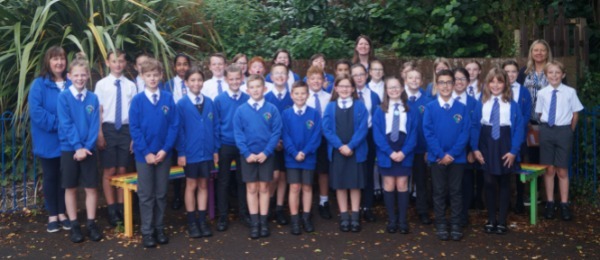
ACADEMIC YEAR 2021-2022
Vocabulary Day
We celebrated ‘Vocabulary Day’ today. We had a lovely day sharing our words. Thank you for all the effort that went in to the fantastic outfits!
Poetry Slam
Recently, some year 6 children were invited to Dillington House for Somerset Literacy Network’s annual ‘Poetry Slam’. We spent a fantastic morning with incredible poet, A. F. Harrold who delighted us with performances of his own poems, provided us with some top tips for writing poetry and gave us wonderful feedback on our own poems (which we were able to share on the ‘poetry wall’. Our morning was interspersed with a ‘break for cake’ and a visit to the ‘bubble zone’. During the morning, everyone present wrote down their favourite word and sent it on a paper aeroplane to poet, Annie Fisher, who then wrote us a poem with all of our favourite words included in it. Ours were effervescent, flabbergasted, stelliferous, tranquility and penultimate. What a fantastic morning!
Natural Disasters
We have been learning about different types of natural disasters, their causes and the effects of them on communities, economies and the environment. In small groups, we selected a natural disaster to become and ‘expert’ in and created posters/leaflets/fact-files to present this information to the rest of the class. We created a presentation and delivered it to the rest of our class so that they could learn about each disaster, too.
Jubilee Celebrations
We have been celebrating the historic occasion of Queen Elizabeth II’s Platinum Jubilee. We first immersed ourselves in the occasion of her coronation by imagining what it would have been like for the British public to experience this either at home, or in London, in 1953. We got into character and wrote postcards reporting our experience.
In the afternoon, we had a very patriotic time celebrating the Queen’s Platinum Jubilee with a tea party and crown parade. Well done to everyone who entered the competition, and congratulations to the winner, Iris.
PGL - Dragonboat Racing
On our final day at PGL, we visited the Sailing Academy at Portland and had great fun dragon-boat racing. We split into three teams to learn the skills we needed and then competed in several races against each other. The staff at the academy praised all of the children in year 6 for their great enthusiasm and team work. Well done, year 6!
PGL PHOTOS DAY 3
Some photos of day 3 with children enjoying more activities.
PGL PHOTOS DAY 2
Another fantastic day down at PGL with the children taking part in lots of activities and a birthday to celebrate too!
PGL Photos Day 1
The children arrived safely and enjoyed their first day at PGL visiting the beach and playing games.
Science: How is water transported around our body?
In science, we have been learning about the transportation of water around our bodies. We began by revising what we already know about the digestive system. In groups, we labelled an image of this body system. Following this, we learnt about how water moves through this system. To show how water is absorbed in our intestine, we carried out an experiment using jelly snakes. We measured the length and width of the snakes before placing them in a tray and filling the base with water. We left the snakes overnight, and the next day we noticed that they looked swollen. We measured the snakes again and found that the length and width of them had increased as they had absorbed the water from the tray, just like water is absorbed in out intestines.
Geography: The California Gold Rush
We have been learning about the discovery of gold in California in the 1840s and how this led to mass migration of people to the state. After learning about the often perilous conditions people faced on the journey to California and the difficulties those who made it faced, we created freeze frames and small plays about different human experiences of the gold rush.
Science: How does the Heart Work?
We have been learning about the human heart and how it pumps blood around our body. As part of our learning, we worked in pairs to create an origami model of the heart. Once we had created the model, we were able to explain how blood moves through our heart to either our body or our lungs. Did you know that a red blood cell can travel your body in only twenty seconds? Wow!
History - Enigma and Codebreaking
We have been learning about codebreaking during WW2. We learnt about Enigma, Typex and Bombe machines and the work of Alan Turing.
Following this, we created our own ciphers and cracked some coded messages. Afterwards, we created some of our own codes and challenged our friends to crack them.
Earth Day
As part of our ‘Earth Day’ activities, we made agamographs to highlight the urgent action needed to save our planet. We also made individual pledges to make a difference in our own lives. We learned about the work of amazing children from around the world, who have made outstanding changes in their local communities.
Science - The Six Kingdoms
We have been learning more about the Linnaean system of classification and the six kingdoms associated with it: Plants, Animals, Bacteria, Fungi, Protists and Archaea. In order to help us remember lots of the information associated with these kingdoms, we created revision spinners, so we could revise and quiz each other on the facts we have learnt.
Art Week
During ‘Art Week’, Class 13 learnt about Impressionism and Post-Impressionism and the artists associated with these movements. Our artist focus was on Vincent van Gogh. First, we analysed van Gogh’s ‘Starry Night’; then, we did focus sketches of sections of Starry Night; finally, we experimented with creating a colour palette of similar hues and used oil pastels to create our own version of Starry Night.
Gas Masks and Air Raids
In Class 13, we have been learning more about gas masks and air raids in World War Two. We were given four research tasks and rotated around the room to each research station. We analysed WW2 propaganda, used non-fiction texts to research new facts, examined real artefacts and learnt about different types of gas masks and their purpose.
Evacuee Experience Trip
Class 13 were evacuated to Mapstone Farm (Somerset Rural Life Museum in Glastonbury) this week for an experience day. During the day, children learnt about life as an evacuee in Somerset during World War Two. Learning really came to life through the three workshops: Rationing, Air Raids and Dig for Victory. Children were given the opportunity to experience an air raid simulation, write letters home to their parents, design a propaganda poster, plant seeds to grow food for their family, role play as shopkeepers and customers adhering to rationing guidance and design nutritious family meals with limited supplies. What a fantastic day! The staff at the museum commented on the children’s enthusiasm and impeccable behaviour. Well done, Class 13! Thank you to all the adults at home who helped create such amazing outfits for the children to wear; they all looked very authentic.
Factors and Multiples
In maths, we played a factors and multiples game. The first player shaded an even number on a hundred-square. The next player had to then shade a factor or multiple of that number. Play continued until there were no available squares left. The winner was the player with the most squares shaded.
We also learnt a new game, ‘Fizzbuzz’, which was great fun! We counted from one, and each time we reached a multiple of three, we said, ‘Fizz’, and for every multiple of five, we said, ‘Buzz’. If a number was both a multiple of three and five, we said, ‘Fizzbuzz’. We managed to reach 120 today.
PSHE
In today’s PSHE lesson, we learnt about how people who are in loving and stable relationships demonstrate their commitment to one another. We learnt about the difference between marriage, civil partnership, arranged marriage and forced marriage. We matched up the terms we were learning about with their definitions. Finally, we looked more closely at forced marriage and discovered that it is illegal in the UK.
Fractions
Today, we practised simplifying fractions and finding equivalent fractions. We used Skittles to help us. We first recorded what fraction of the sweets were each colour. We then found equivalent fractions. Finally, we recorded each original fraction in its simplest form.
PSHE (Working Together)
In our first PSHE session this year, we discussed what makes good team work and the different ways that you can work as a team. We decided that key skills included listening carefully, making eye-contact, giving everyone a chance to share their ideas and testing different ideas. We played some games that relied on team work and challenged some of these skills. The most difficult challenge was trying to randomly count from one to twenty, with only one person allowed to say each number. We couldn’t predetermine who would say each number, or what order we would speak in. The furthest we’ve got so far is from one to six. We are going to keep trying!
Living things
In science, we have been learning about the classification of living things. Today, we created some dichotomous keys. Initially, we used our keys to identify dolly mixture sweets. Once we’d successfully created these, we moved on to apply this to living things: butterflies, birds and bees.
History
In history, we created a human timeline, plotting key events of the twentieth century. Can you work our which picture corresponds to each of the key events?
- The death of Queen Victoria
- The sinking of the Titanic
- The start of WWI
- The start of WWII
- England win the World Cup
- Neil Armstrong lands on the moon
- The advent of the internet
- Nelson Mandela is freed from prison
Living Things and Habitats
As part of our science unit - Living Things and Their Habitats – we have been finding evidence of living things in our school environment. We discussed the most likely locations to discover this evidence, how it could be collected/recorded and how this might vary if we were to repeat our investigation in a different area.
ACADEMIC YEAR 2020-21
'Escape the Castle'
In maths recently, Mrs Moss’ maths group were challenged to ‘Escape the Castle’ and played an escape room game. It really tested the children’s resilience. They were required to complete five rooms, each containing a challenging reasoning and problem-solving task, in order to earn the ‘key’ to that room and move on to the next. The final challenge required them to use clues from each room, work together and solve the final puzzle. Everyone had great fun competing to ‘Escape the Castle’.
Day 3
They were able to enjoy some activities outside today in the sunshine. Unfortunately we have only been able to recieve photos from Mrs Moss's group.
Day 2
Yesterday they enjoyed some climbing and robot building in the sports hall and then ventured outside for a soggy sensory trail. Weather aside they are having a great time!
PGL
A quick update from Osmington.
The children have had a great first day and have all settled in well! Hitting the ground running they went for a hike down to the beach and played chaos tag. When they got back they were shown to their room and allowed some time to unpack and get sorted. They then enjoyed some activities in the sports hall to avoid the rain.
Science
Class 13 have been learning about how water and nutrients are transported around the body. We carried out two experiments to demonstrate the processes of osmosis and diffusion within the body.
Fractions
Mrs Moss’ maths group have been revising their fractions knowledge. First, we were tasked with completing a fractions jigsaw, which involved matching up calculations and their answers. This was challenging as some answers had been simplified, some were improper fractions and some were mixed numbers. We had to be careful to match the right pairs together. Congratulations to Lily and Taylor for their great team work and finishing their jigsaw in the fastest time.
We also played a multiplying and dividing fractions loop game to challenge our mental calculation skills. Again, this wasn’t easy! We did make a few mistakes, but we were able to identify them and complete the loop successfully.
How does the Heart Work?
In year 6 this week, the children have been learning about how the human heart works. This afternoon, they demonstrated how the heart pumps blood around the body. The red balloons represent the oxygenated blood (carried in arteries) and the blue balloons represent the deoxygenated blood (carried in veins).
Science Homework
Inspired by ‘Science Week’, children in Class 13 have been taking part in some fun science activities at home. They’ve made lava lamps, leakproof bags, rainbows and much more. Have a look through the pictures at their amazing creations. Well done to everyone who took part!
Science Week
During Science Week, our topic was ‘Electricity’ – and more specifically, Michael Faraday’s invention of the motor. We were given some electrical components (wires, batteries, a motor, a switch and a lightbulb) as well as limited craft resources, such as lollypop sticks, coloured card, cotton reels and plastic straws. Using this equipment only, we were tasked with answering the question, ‘How do you make a fairground ride move?’
We designed our ride, incorporating the resources we had been given, and also thought about how the electrical circuit would need to be configured in order for the motor to work. Then came the fun part! We made our rides and experimented with ways of attaching the motor so that the ride would be free-standing, move at a good speed and look as realistic as possible. We had to be good problem solvers, as we had to keep testing and adapting our original ideas when things didn’t quite go to plan.
In the end, we produced some fantastic rides – from Merry-Go-Rounds, to Teacup Rides; from Bucking Broncos to a ‘Wheel of Doom’! Well done to everyone for your hard work and effort throughout the week – we thoroughly enjoyed seeing your rides take shape. Congratulations to Michael, Mabel and Bianka for constructing the winning ride, and to Morgan, Freya and William for their winning teamwork!
Natural Disasters
In year 6, we have been learning about natural disasters. This week, we were tasked with creating models/simulations of natural disasters in school, or at home. The pictures show us trying to create earthquake-proof buildings and creating tornadoes. We all had great fun!
Art - Romero Britto
Year 6 have been learning about Brazilian artist, Romero Britto. They have taken inspiration from his bold and colourful work to create their own pieces. Aren’t they fantastic?
Perspective Art
Year 6 have been refining their art skills at home recently. Check out the fantastic perspective art they have been working hard to create.
International Day
Year 6 celebrated International Day this week. They spent the day learning about life and culture in Australia. Take a look at the photos to see what the children at home got up to. There's role play, artwork, leaflets, stories and baking. Well done for all your hard work! We hope you saved some of those yummy Anzac biscuits for us!!
Christmas Lunch
We really got into the festive spirit this week with a fantastic Christmas lunch. We pulled crackers, wore hats, had a sing-song and enjoyed a delicious turkey dinner with all the trimmings. Thank you so much to the kitchen and lunchtime staff for all their hard work.
Bacteria
In science, we have been learning about microorganisms, particularly bacteria (also called germs). We have been investigating how bacteria spreads using glitter as our ‘germ’. Each child submerged their hands in a glitter and water mixture to represent the transfer of germs from a sneeze or cough. After this, all children washed their hands in the way they normally would. We tracked the spread of germs around the classroom and Year 6 building. Between children ‘sneezing’ and washing their hands, germs had already spread to their tables, door handles, doors, chairs and books. Even after washing hands, some germs remained and spread further to equipment they used throughout the day. We learnt more about the importance of the ‘Catch it! Kill it! Bin it!’ campaign and also discussed, again, the importance of regular and thorough hand washing given the current global pandemic we are living through. We have become even more germ-conscious than we already were!
VE Day Party
As a celebration at the end of our WWII topic, we held a themed day in school this week. All the children (and adults) dressed up in costumes appropriate to the era – we had evacuees, soldiers, land girls, pilots and more. Everyone looked fantastic! Thank you to all the adults at home for helping create such wonderful costumes. On the day, we created artwork inspired by The Blitz, decorated for a celebration and attended a VE Day party. At the party, we listened to Churchill’s end of war speech, ate scones, learnt about the celebrations across Great Britain (and in Yeovil) and played Beetle Drive. As you can see from the photos, we have all enjoyed a fantastic day.
Yeast Experiment
We have been learning about how yeast works. We set up an experiment to see if yeast could make balloons rise. We put a teaspoon of yeast, some warm water and a teaspoon of sugar in a measuring cylinder and placed a balloon on top. We then took a photograph of the balloons every five minutes and gradually, we saw them inflate. We discovered that the yeast was activated by the warm water and that, once activated, it ‘ate’ the sugar. This caused the mixture to rise, which, in turn, caused the balloon to inflate.
Maths
We have been practising counting forwards and backwards through zero. We played negative number tug of war – one of us was ‘positive’ (trying to reach 20) and the other ‘negative’ (trying to reach -20). We rolled a dice and flipped a counter to determine the operation and how many to add/subtract. The winner was the first to reach negative 20, or positive 20. Some of us got very frustrated at moving in the wrong direction, but we all had great fun!
Codebreakers
In history, we have been learning about the fantastic work of codebreakers during World War Two. We learnt about life at Bletchley Park, Enigma and the work of Alan Turing, who created the foundation for modern computers. We were amazed to discover that ‘Computer’ was a job title given to people (often women) during WWII.
We created our own ciphers and tried to crack some secret codes. Then, we created our own codes for our friends to crack.
Maths Week
As part of Maths Week England 2020, Year 6 have taken part in several maths challenges. The first challenge they competed in was the annual ‘Maths Week England Quiz’. Children in Year 6 across the country are given the same three challenging problems to solve and create a total answer, which can then be submitted to the competition.
Following this, children chose problems from a selection that tested their reasoning and problem-solving skills. Finally, those wanting an extra challenge solved some mathematical logic problems of increasing difficulty, earning points for each one completed.
Children worked collaboratively, in teams, on all challenges, stretched their brains and really worked very hard. There were lots of cheers of celebration (and relief) when they realised they had successfully solved each problem. Well done, Year 6!
Year 6 Remembrance Assembly
The children of Year 6 produced their Remembrance Assembly last Friday. The assembly can be viewed below.
Gas Masks
This week, we have been learning about how and why gas masks were used during WWII. We examined information from a range of sources: eye-witness accounts, propaganda videos and real artefacts. Children produced some fantastic, informative work to show their understanding.
'Dig for Victory'
During WWII, propaganda was used to encourage the people of Britain to do certain things. One of the big campaigns of the Second World War was ‘Dig for Victory’. As part of this movement, people were encouraged to use any green space - no matter how small - to grow and produce their own vegetables. The posters created were bright and bold, yet simple and effective. We watched a campaign video too, which explained in easy steps how a novice could begin to ‘grow their own’. Once we had discussed the campaign and examined lots of examples of propaganda and sources of information, we created our own ‘Dig for Victory’ posters.
Art Week
During art week, Year 6 learnt about impressionism and post-impressionism. They spent time learning about impressionist artists and their most famous works and then focused on post-impressionist, Vincent Van Gogh. After learning more about this life, the children spent time studying ‘Starry Night’. They re-created focus parts of the piece in their sketchbooks, thinking carefully about how to show texture and light. They then experimented with warm and cool toned colour palettes before creating their own ‘Starry Night’.
'The Night of Power'
As part of our Islam topic, we learnt about ‘The Night of Power’ – a very special story to Muslim people, in which Muhammad is visited by the angel, Gabriel (Jibril), and given word from God. Muslim people still celebrate this story with the festival of Lailat al Qadr, which is held on the 27th night of the month of Ramadan each year.
We used drama and freeze-frames to act out parts of the story.
First Week in Class 13
Class 13 started their new science topic by investigating the presence of living things within the school grounds. They certainly found plenty of evidence!
We discussed how to tell the difference between living, non-living and once-living evidence, using the acronym MRS GREN to help us.
History
We started our new history topic – WW2 – by placing the war on a timeline of other events that occurred in the twentieth century. Class 13 tried to arrange the events in chronological order and then freeze-framed the events to create a human timeline – they did a great job!
You should be able to sp
ot
- Queen Victoria
- The sinking of the Titanic
- Outbreak of the First World War
- Outbreak of WW2
- England winning the World Cup
- Neil Armstrong landing on the moon
- The internet going live to the world
- Nelson Mandela being freed
Bonus points if you can also guess the correct year!
Science
In science this week, we learnt about the work of Carl Linnaeus: the botanist and zoologist who created the system of taxonomy that we still use today for classifying all living things.
At the start of this lesson, we were all ‘labelled’ as a different living thing. Our task was to organise (classify) ourselves into groups of living things by whatever method we thought was most appropriate. We found this very challenging as there were some living things that we thought could have been classified into more than one group. Have a look at the labels we came up with!
After learning about Carl Linnaeus’ system of taxonomy, we better understood how living things could be more easily classified and we learnt about the classification of a lion (Panthera Leo). At the beginning of this activity, everyone was standing as we were all living things. As the kingdoms of classification eliminated more living things, there were fewer of us left standing. Eventually, just the lion remained.
Academic Year 2019-2020
Home Learning
Class 13 are a creative bunch! Here are some of the other activities they have been getting up to at home…..
Art
Look at these fantastic pieces of art! Class 13 have been learning about creating perspective in their artwork and you can tell they’ve managed it brilliantly. The bright, bold colours really make them stand out!
Favourite Books
Year 6 have been thinking about their favourite books recently. They've written some fantastic poetry with hidden clues for their teachers to try and guess which book they were describing. We really enjoyed reading them and guessing - well done! They’ve also recreated the book covers of their favourite books and written a short review. Perhaps you’ll try one of these wonderful recommendations next…….
Prayer Mats
Class 13 have been learning about the importance of prayer to Muslims. They have thought carefully about the colours and patterns used and designed some wonderful prayer mats of their own.
Word Clouds
Class 13 have been creating word clouds for some of their favourite books. They thought carefully about the vocabulary the used to describe the characters from those books.
Natural Disasters
Class 13 have been ‘re-creating’ natural disasters at home. Have a look at the tornadoes and volcanic eruptions - aren’t they fantastic?
The Heart
Class 13 have been learning abut the heart and circulatory system in science. Here are some of their fantastic diagrams!
Nature Scavenger Hunt
Class 13 have enjoyed getting outside and completing a nature scavenger hunt. Here are some of the things they found…….
Graffiti
Class 13 have been creating some graffiti-style artwork inspired by the artist Keith Haring. They are fantastic!
Dragon Eyes
Year 6 produced some fantastic dragon-eye artwork last week, inspired by St. George’s Day. They look fantastic! The children all commented that it has been one of their favourite activities so far!
Natural Disasters
Year 6 have been learning about natural disasters and how people prepare for these in countries where they occur more frequently. They designed a ‘natural disaster survival kit’ of several items that they would keep in a shoe box to grab if they had to seek shelter during a natural disaster. They had to think carefully about what they would like to include for recreation versus what would actually be useful! We were glad to see no games consoles made it into the kits!
VE Day
As you may have seen from earlier posts on the blog, Year 6 were gearing up to help with Yeovil’s commemorative VE Day celebrations this May. Some children had already made bunting and we were hoping to visit a local residential home to make some with the residents too. While we are unable to do those things, children have been busy writing stories about VE Day in Yeovil in 1945. What fantastic work!
Natural Disasters
Class 13 have been working hard at home on their 'Natural Disasters' geography topic. Here is some of the fantastic work they have produced…..
Spellings
Year 6 have been having fun with their spelling work this week! Some used scrabble tiles, some used morse code and others got messy with ingredients from the cupboard. The strawberry sauce sounded delicious!
World Book Day
Class 13 celebrated World Book Day this year by dressing up as their favourite book characters. We had characters from magical books, classics, family favourites and more! Can you spot Anne Frank? Stanley Yelnats? Alice and friends? How about some of Mr Dahl’s wonderful creations?
English
At the start of our persuasive writing unit, Class 13 turned detective to discover the features of persuasive writing from some tourist leaflets. They were able to find rhetorical questions, persuasive vocabulary, examples of emphasis and exaggeration, ambitious adjectives, short, snappy sentences and key information.
Creative Minds Workshop
As part of Yeovil’s plans to celebrate the 75th Anniversary of VE Day on May 8th this year, Natasha Rand, a local community artist, visited Huish to start an inter-generational art project. Children from Year 6 took part in a workshop to create bunting that will be displayed in Yeovil town centre when the celebrations take place in May. Children used the colours red, white and blue to design their bunting and decorated them with silhouettes of recognisable figures or objects from WWII. This linked perfectly with Year 6’s previous WWII history topic. Natasha commented on the amazing designs the children produced and was very impressed with the creativity and enthusiasm of the children involved. The second part of this project will see ten children from Year 6 join Natasha at a local elderly care home to create more bunting with some of the residents.
Science
Year 6 continued their science this week with learning more about how light travels; in particular, they tried to find a solution to make light ‘bend’ so they could see around corners. Year 6 already knew that light travels in straight lines so they learnt about periscopes and how they are a solution to this problem. This also linked back to our previous WWII history topic and we discussed the use of periscopes on submarines. Children made and tested their own periscopes, ensuring they positioned the mirrors correctly so they could see around corners with them.
Geography
We have been learning lots about California’s history and all the advantages of living there but what are the disadvantages of living in California?
This is the list Class 13 came up with…
• Earthquakes
• Wild fires
• Tsunamis
• Heat-waves
• Avalanches in the mountainous areas
• Extremes of weather
• Landslides
• Gun crime because you’re allowed to carry a gun in America
• Lots of underdeveloped areas where poorer people live
• Donald Trump is in charge
• If you go to jail, the experience is worse than in the UK
• More litter, especially in the big cities
• Lots of other animals and creatures live there and they may be poisonous
• Higher rates of serious crime
After discussing which of these has happened (or could happen), we focused on one of these: earthquakes.
The San Andreas Fault is located in California. It is the tectonic plate boundary where the Pacific Plate meets the North American Plate. The fault line is approximately 750 miles long. In July 2019, some parts of California experienced its largest earthquake in twenty years.
Class 13 have been researching and preparing a news report of this event. They are writing a script to be performed and filmed as a news bulletin. Recently, the children have been learning about journalistic writing in English, so they have been using this knowledge to help them.
International Day
For ‘International Day’ this year, Huish has been celebrating the continent of Africa. With such a rich and varied culture, we were spoilt for choice with ideas of how to celebrate! In Year Six, we chose to create some African-inspired artwork. We used the colours: red, gold, green and black (influenced by many of the African flags). Our main inspiration came from the geometric patterns seen in a lot of African art. We also thought about the wildlife found in Africa and incorporated this into our pieces too. We created silhouettes of some African wildlife and placed these at the centre of our work and then created geometric patterns around them. Some children chose to create geometric patterns on longer strips of paper as well.
In addition to the artwork we created for ‘International Day’, Year Six also took part in an African dance workshop. They danced to a Ghanaian piece of music and learnt that many typical dance moves in African culture have strong links to slavery. Year Six had a great time learning and performing their dance.
Geography
In geography, we have been researching California’s rich history and development. We have learnt about the history of the Pony Express, the Transcontinental Railroad, industry and agriculture as well as Silicon Valley, Hollywood, Disneyland and the major cities and tourist attractions in California. Using our research we were able to explain why there was a boom of migration to California before it officially became a state and why it is still a popular destination for residents and tourists.
English
In English, we have started our new unit: journalistic writing. We turned detective to hunt down the features of journalistic writing in newspapers. We managed to identify many of the features by ourselves and generated a comprehensive list.
Science
In science, we have started our new topic: light. We have been learning about how light travels. We designed our own investigation to prove that light travels in straight lines and to discover what materials allow/block the passage of light. We began by experimenting with torches and materials. After this, we refined our ideas and designed a formal investigation. Finally, we carried out our investigation.
Geography
We have been learning about the history of California. In this session we learnt about the Gold Rush in 1848. In groups, we re-enacted four scenarios :
1. James Marshall and John Sutter finding gold;
2. People from the east reading news about the discovery;
3. People journeying to California along one of the treacherous routes;
4. Miners digging and panning for gold under the harsh Californian sun.
Each group rehearsed a freeze-frame or short play and performed it with a narrator to the rest of the class.
Science
In science this week, we have been investigating how yeast works to make bread rise. We were given some yeast, sugar, balloons, warm water and measuring cylinders. We decided to make our variables the amount of sugar and yeast we used but kept the amount of water and the measuring cylinder the same to make the test fair. We found the best conditions for yeast to work were when a packet of yeast was mixed with the water and two teaspoons of sugar. We discovered that the measuring cylinders were a little small so conducted a fourth experiment with a larger bottle containing warm water, two teaspoons of sugar and a packet of yeast. The measuring cylinders containing sugar, yeast and warm water all inflated. The ones with more sugar and yeast inflated at a quicker rate than the others. During the experiment, we noticed the bubbles created in the measuring cylinders caused by the reaction between the contents. Our conclusion was that yeast must react with the sugar content of dough and warmth to make bread rise.
Science
In Science we have been learning about microorganisms, particularly bacteria (also called germs). We have been investigating how bacteria spreads using glitter as our ‘germ’. Each child had glitter sprinkled on their hand to represent the catching of a sneeze in their hands. After this, all children washed their hands in the way they normally would. We tracked the spread of the germs around the classroom and Year 6 building. Between children ‘sneezing’ and washing their hands, germs had already spread to their tables, door handles, doors, books, watches and their chairs. Even after washing hands in the way they normally would, some germs remained on hands and spread further to other equipment they used in the session. We learnt more about the importance of the ‘Catch it, Kill it, Bin it’ campaign against germs and watched a video that showed the importance of a thorough hand wash with soap before eating to ensure bacteria are removed. Some members of the class have been very germ-conscious since this experiment!
English
The PTFA have kindly donated new books to each class in the school. In order to familiarise themselves with the new books soon to join their bookshelves, Class 13 have been ‘speed dating’ with books. They were given five minutes to spend with six of these new books and then ranked them by order in which they would most like to read them. There are lots of lovely new titles and something to appeal to everyone – Class 13 are desperate to get reading! Thank you to the PTFA.
Code-Cracking
Class 13 have been working tirelessly to crack secret codes crucial to the war effort! We have been learning about the vital work of Alan Turing and other code-breakers who worked at Bletchley Park during WWII. The Enigma machine and how it helped crack secret German codes during the war fascinated us.
We made our own machines and cracked some codes before making our own codes for others to crack. We set our code-crackers to different settings each time we wrote a new code so that it couldn’t be guessed easily!
Fleet Airm Arm Museum
On Thursday 17th October, we visited the Fleet Air Arm Museum. The children dressed as World War Two evacuees for the day. During our visit, we took part in two workshops – one about rationing and one about The Battle of Britain. Both were fascinating and so engaging! We were able to be ‘hands-on’ and examine real artefacts.
In the rationing workshop, we planned a week’s menu for our teacher. We had to weigh our ingredients and spend our meat ration money wisely so it would last a whole week. Each group had a different focus: breakfast, lunch, dinner, celebrations and, most importantly, tea! We were tasked with planning seven lots of meals, a celebration cake for a birthday and how many cups of tea one person could have a week. Groups had to negotiate with each other too – the breakfast group had the whole milk ration for the week.
We also learnt about how Britain triumphed over Germany in The Battle of Britain. We discovered that this was a team effort and how all the parts worked together to make the British campaign a success. We researched and interrogated real artefacts, maps, the ‘roll of honour’ and saw demonstrations of how the command structure and radar system worked.
Finally, we toured the museum with a knowledgeable guide who told us about the planes that were involved in the war and how technology and manufacture advanced in such a short period of time to change the design and speed of them to keep up with the requirements of warfare.
We had a fantastic day! The learning centre team at the museum were extremely impressed by the attitude and behaviour of all the children who visited. They commented that they asked intelligent and thoughtful questions, worked well together and were completely engaged in what they were doing. Well done, Year 6!
History - Gas Masks
In Class 13, we have been continuing our history topic by researching how and why gas masks were used during World War Two. Children spent time undertaking their research at four ‘information stations’; they discovered how propaganda was used, studied real gas masks, researched the different purposes of gas masks and independently researched interesting facts about gas masks.
Living Things and Their Habitats
As part of our ‘Living things and their habitats’ unit in science, we have been learning about the work of Carl Linnaeus who developed the taxonomy for the classification of all living things. We have been learning about the six kingdoms of all living things and learning some challenging vocabulary along the way! To help us remember the six kingdoms and the difficult words, we made wheel spinners to test our friends. Once you have spun the arrow on the front of the wheel, you have to tell your partner a fact about that kingdom. Finally, you can lift the flap to check your answer.
Computing
In computing, we have started out first programming unit. We will be creating our own quiz games for our World War Two topic. During the first part of the unit, we are creating times table quiz games to test and refresh our programming skills. Initially, we mastered the basic programming for a question and response e.g. 7 x 6 = 42.
After this, we learned some new skills that enabled us to generate a random question, repeat this for a given number of ‘goes’ and add a score for a correct answer/remove a score for an incorrect answer. Next session, we plan to make the game more visually appealing and our challenge is to add programming for an additional player.
WW2 continued
We have been discovering more about what life was like in Britain during World War Two. This week, we have been learning about the different types of air raid shelters used during the war. The two types of shelter we have been researching are Morrison shelters
and Anderson shelters. We were most surprised to learn that people had to build their own shelters and some had as many as 350 parts to assemble. Fortunately, the model Anderson shelters we made were slightly easier.
World War Two
In Year 6 this week, we have been learning about the events that occurred leading up to the beginning of World War Two. We listened to Neville Chamberlain’s infamous declaration of war speech and then had a go at writing our own. We practised ‘performing’ our speeches and then recorded them. Some of us got the giggles whilst trying to impersonate Chamberlain’s ‘received pronunciation’ accent!
Following this, we also had a lively discussion about whether war was the only option for Britain in 1939.
Science
In science, we have been learning about the seven life processes of all living things. We searched our school grounds to find evidence of living things within them. In groups, we selected three separate areas to search and recorded our findings in photos, sketches, rubbings and pictograms. We discovered lots of creepy crawlies in the Forest School area but found it more difficult to find evidence of living things on the playground.
Living Things
Following on from our investigation of living things in the school environment, we have been thinking about how we distinguish different types of living things from each other. We thought broadly to begin with but then tried to narrow down our ‘groups’. We learnt that living things are classified into groups based on similar characteristics. We all were given a living thing to ‘be’ and we had to sort ourselves into groups. To begin with, we organised ourselves based on the number of legs we had. After that, we tried to narrow down our categories to make smaller groups e.g. birds, fish, insects, mammals. We discussed how mammals can also be classified within that larger group, for example with the ‘cat family’. Our cat family included a lion, panther and tabby cat. Although all of these are cats, we realised that there were still a lot of differences between them, including their shape/size, habitat, appearance. We ended our lesson by posing a question for next session: How do scientists classify living things so that they can be easily distinguished?
ACADEMIC YEAR 2018-2019
Year 6 Prom
Our year 6 leavers prom was held during the last week of term, where the children dressed in their finest outfits and danced the night away to celebrate their last few days at school. We wish them the best of luck at their secondary schools in September.
Careers Talk
Class 13 & 14 were really lucky to have Lt Cdr Hollingsworth explain the different roles of the Royal Navy. She explained that her role is like the headteacher of a school, but that her students are the fighter pilots who fly all of the noisy jets around Yeovil.
Ellie told us about the exciting career opportunities that can be found within the Navy. She explained that when onboard a ship everyone is on duty all of the time, but that they get good holidays when they return. Life onboard a ship is like being in a village - lots of different people are needed to provide all that the sailors need during their time (chefs, doctors, chaplains, mechanics, engineers, postal workers, to name but a few).
Fleet Air Arm Museum Trip 16.1.2019 (Or should that read 16.1.1939)
We enjoyed a really interesting day at the Fleet Air Arm Museum on Wednesday! Our teachers (and our hosts at the museum) were delighted with the effort everyone had made to dress as World War 2 evacuees – we really looked the part! When we arrived, we met Stuart, our guide for the day (and Gemma’s grandad!). He outlined the day ahead of us before sending us to our first workshop about wartime rationing.
Wartime Rationing
Working in groups, we explored the range of foods available to us in 1939 (no ready meals!) and were tasked with planning a week’s menu for one of our teachers. We chose Mrs. Moss, who took a day off from maternity leave to join us – she must being missing us! Each table group had to plan one aspect of the menu, which included breakfast, lunch, dinner, drinks and a birthday cake (very tricky with rationing in place; only one fresh egg a week was allowed – imagine!). In order to successfully complete the task, we had to negotiate food swaps with other tables as the food allowances were often very small, e.g. 2oz of cheese a week, and make sure we didn’t run out of money! Within the hour, however, we devised a menu of which to be proud – Mrs. Moss wasn’t going to starve! She would enjoy bread and dripping, curried kidneys, rabbit stew, liver and cabbage… You’d have thought her face would have shown more gratitude for such a nutritious diet, especially when we chose her as a thank you for joining us! She was, however, delighted with the birthday cake even though it looked like something that might have come out of Mrs. Fossey’s oven – flat as a pancake! She knew it had taken a lot of our week’s rations to bake it.
The Battle of Britain
Our second workshop involved working in teams to investigate different aspects of the Battle of Britain. We used documents and artefacts to solve puzzles and learn about what actually happened. We explored pilots’ experiences, women’s roles, propaganda and much more! Did you know that Britain was very close to losing the war even though our armed forces were doing an amazing job? Mr. Churchill was extremely worried! Thank goodness the USA came to our aid! Once we gained supremacy in the skies, we also gained the upper hand.
After lunch, we split into groups and enjoyed a tour of the museum, including the aircraft carrier experience. All too soon, it was time to leave for home. What a great day we had had though!
World War II Pick & Mix Homework
We have had a lovely afternoon sharing our ‘Pick & Mix’ homework with each other.
There were cakes, biscuits, board games, poems, cards, posters, a story and a toy, all with a wartime theme. You’ve all been working hard on this creative task and should be proud of your efforts. Thanks to all the parents (and in some cases grandparents) for their support.
Year 6’s trip to the SSDC offices.
On Wednesday 10th October we visited the South Somerset District Council offices as part of our ‘British Values curriculum. We found out about all the diiferent ways the council help our community.
In our House teams we prepared proposals for a new leisure facility for the town. We then learnt about the voted process before voting for the proposal we liked best.
Come and see our display in the main school corridor.






